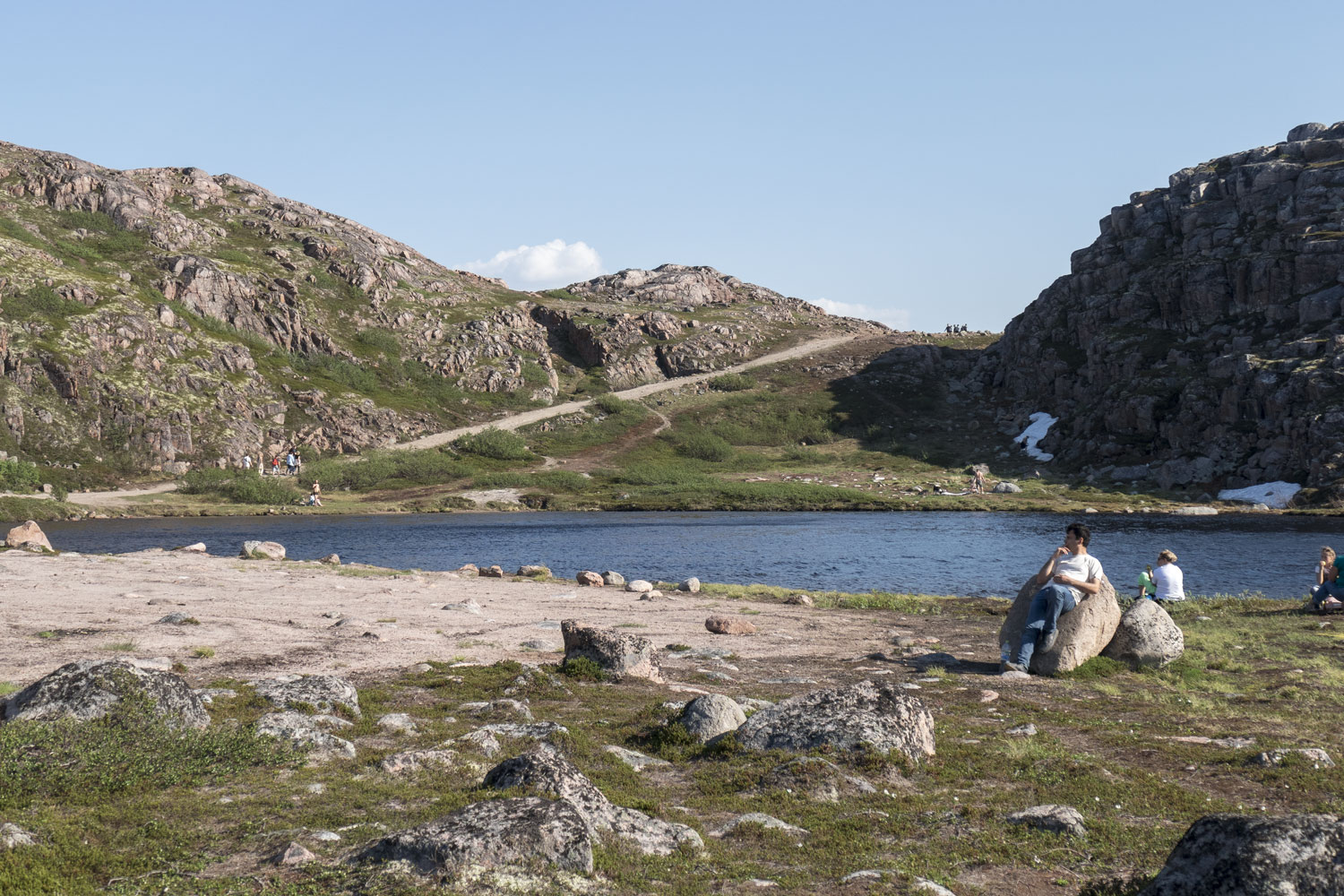Teriberka
The name “Teriberka” comes from the English word “terrible”. During the Civil War in Murmansk, when the troops of the Entente landed, they were so shocked by where they ended up that they kept saying: “man, that’s fucking terrible.”
Joke.
Just here is the Teriberka River, and its name comes from the word “Ter” — which used to be the name of the Kola Peninsula. The village appeared a long time ago: the first mention dates back to 1608. At that time, there were only six huts in Teriberka, and fishermen settled here. How they came up with the idea to settle here at that time — is incomprehensible to me.
Here is the tundra, there is nothing at all.
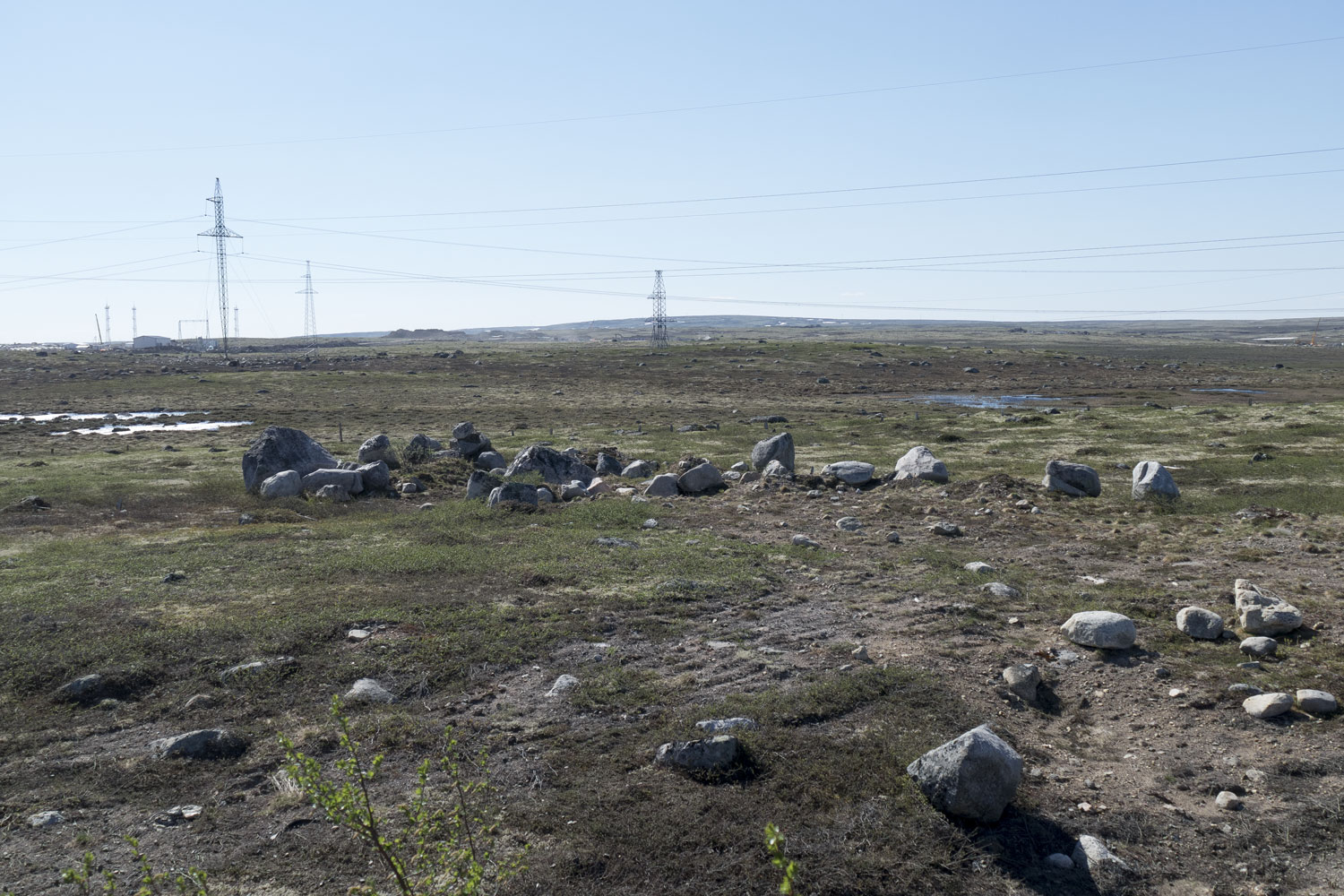
Until 1984, it was impossible to get to Teriberka by car — there was no road. One had to travel by sea or helicopter. Now there is a road, and it is the only road in the European part of Russia leading to the coast of the Barents Sea.
In winter, the road to Teriberka is constantly snowed in, making it impossible to reach the village for several days. In 2017, there was such a heavy snowfall that the road was closed for more than three weeks.
In the summer, there are no particular problems getting to Teriberka. The journey is quite beautiful, and you come across a rock garden along the way.
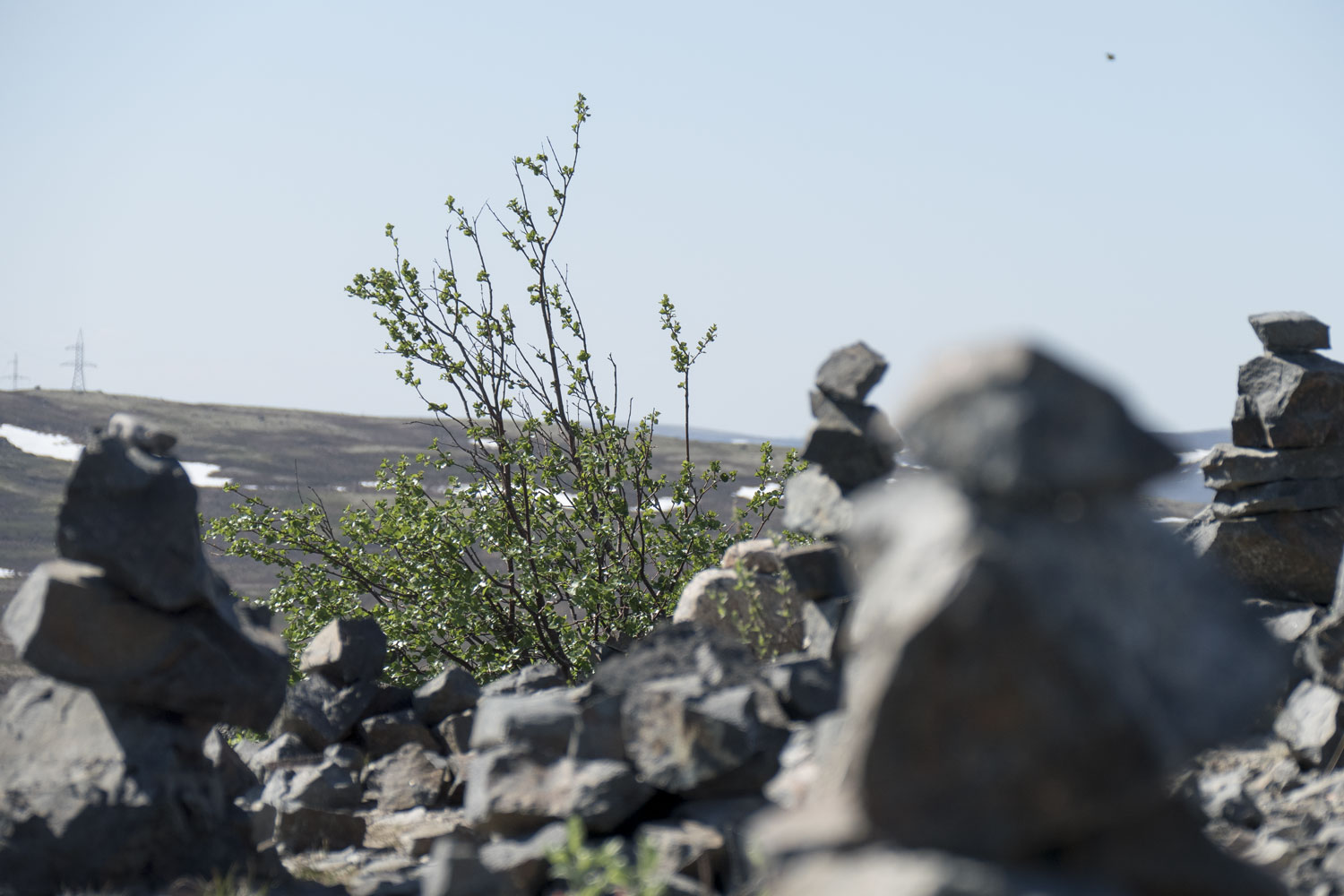
A little further, there is an art installation.
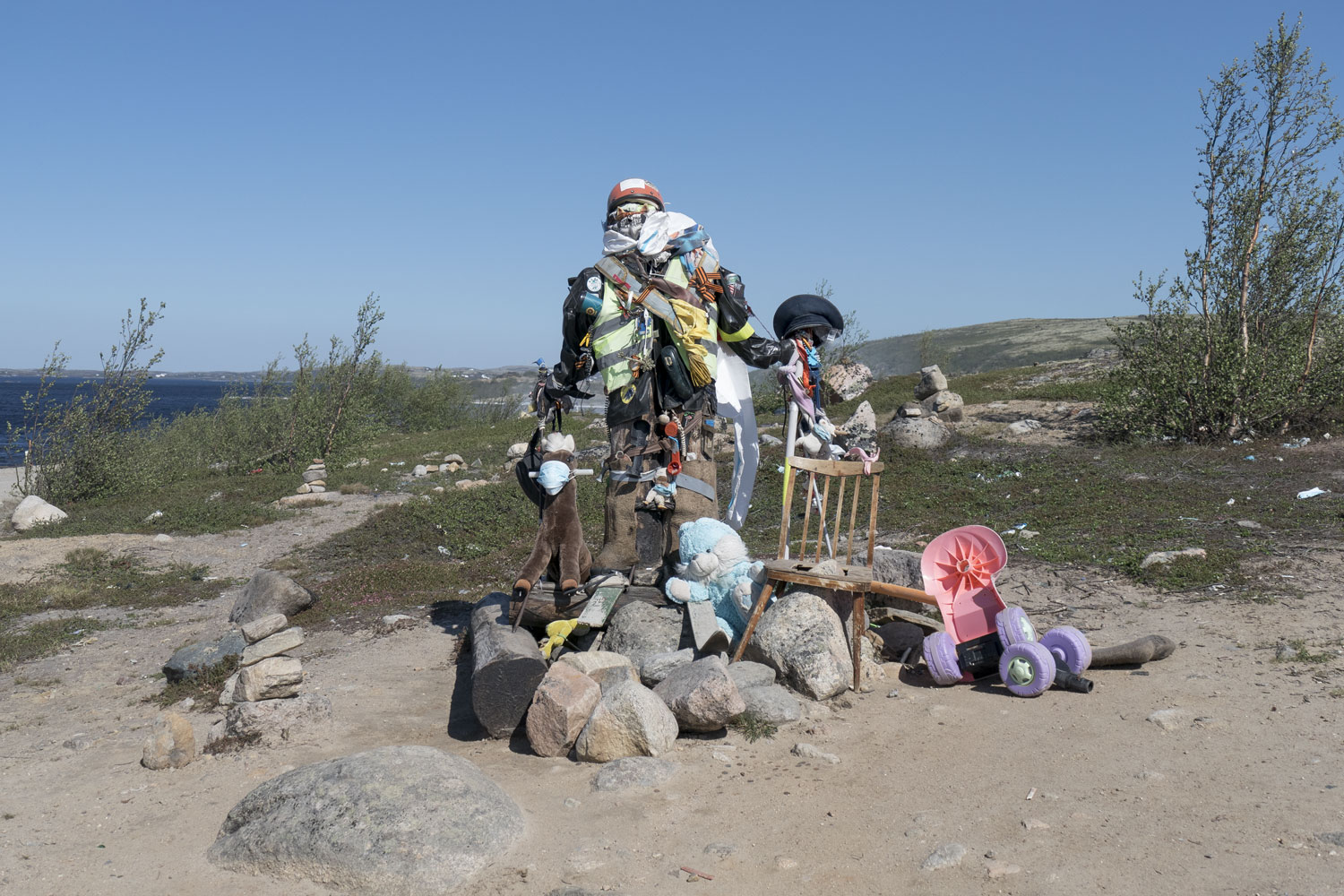
COVID even reached the tundra.
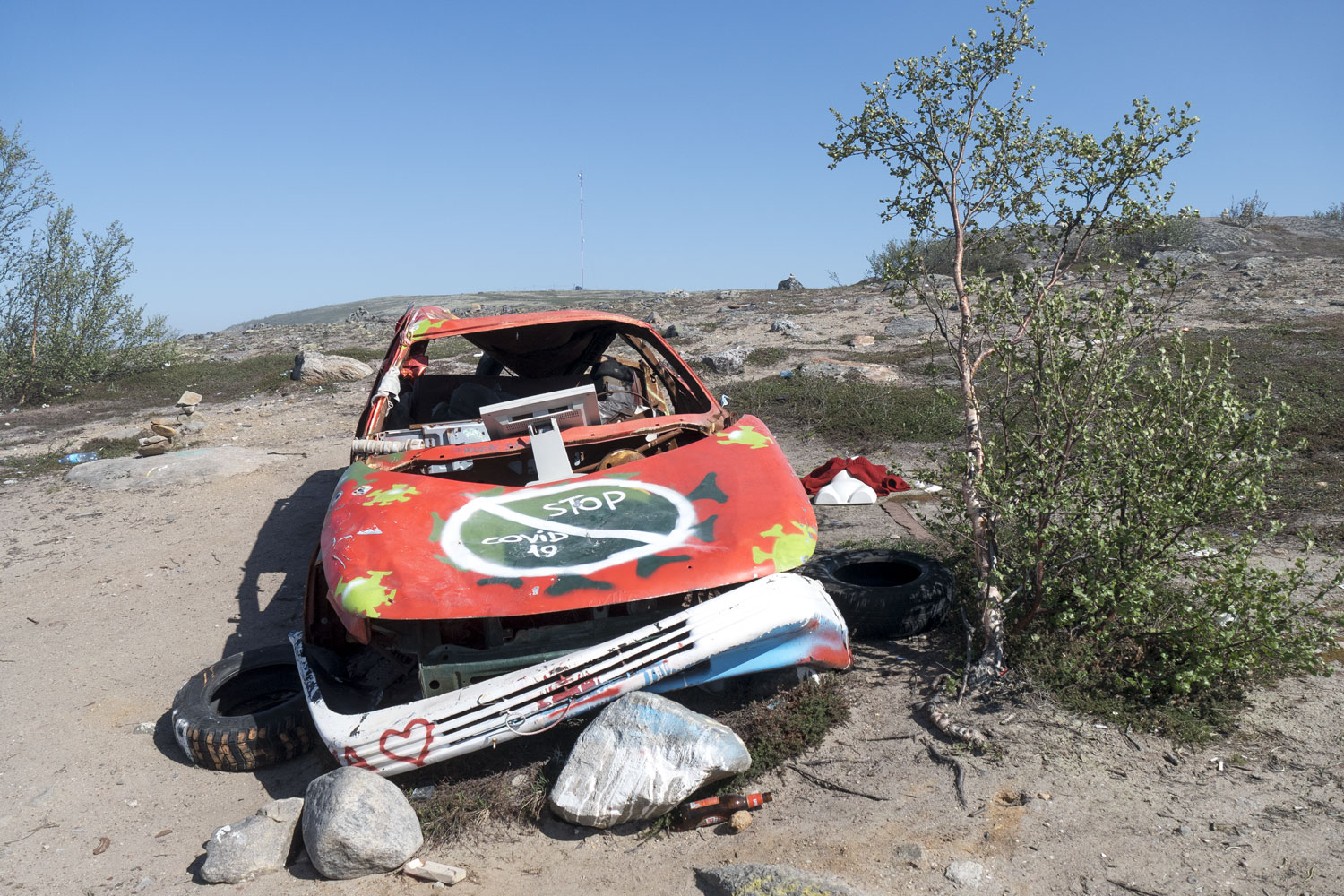
The population of Teriberka was at its peak after the war: in 1959, 4762 people lived here. By the end of the Soviet Union, only half as many people remained in the village, and now there are no people left here at all — about 500.
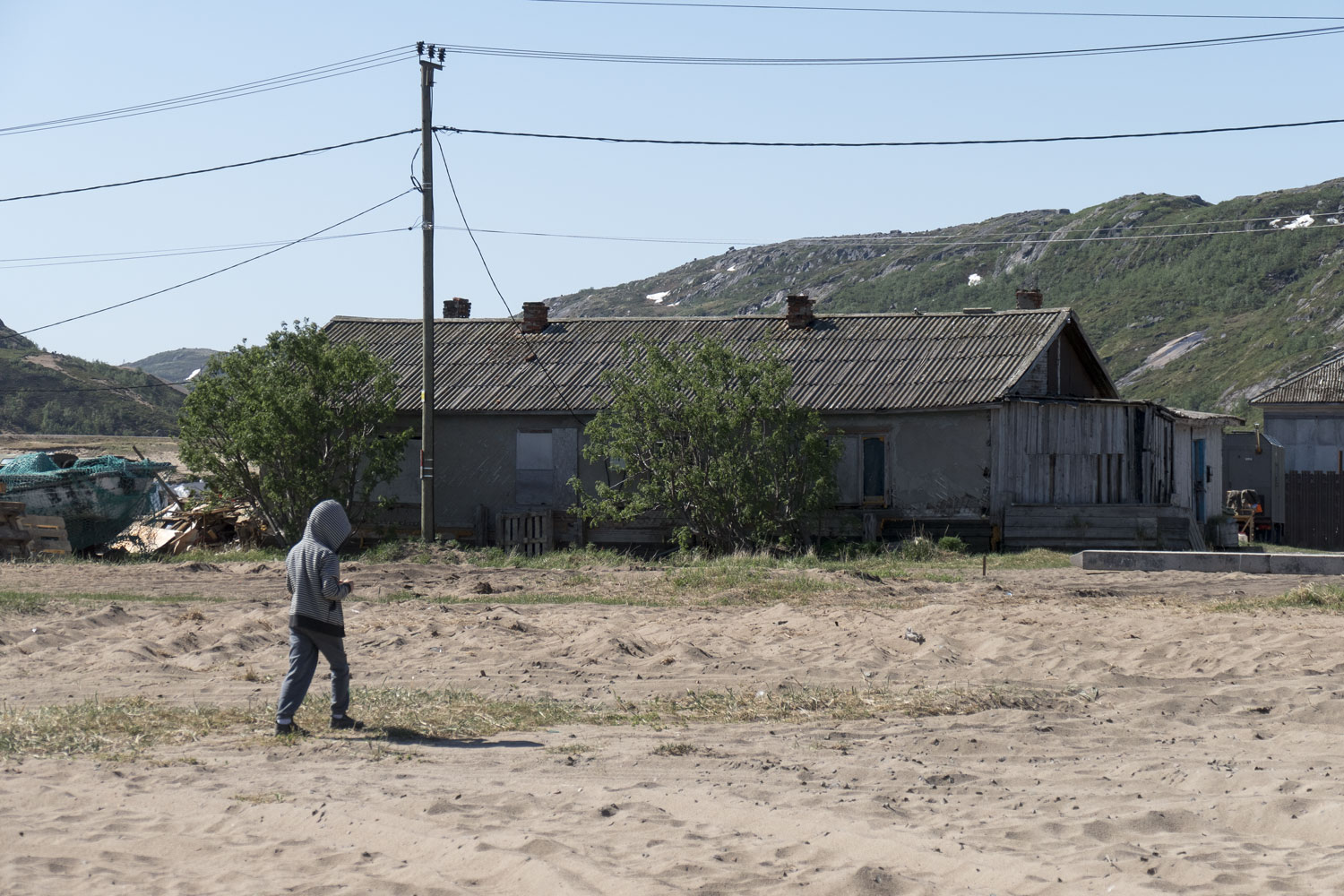
The village is abandoned.
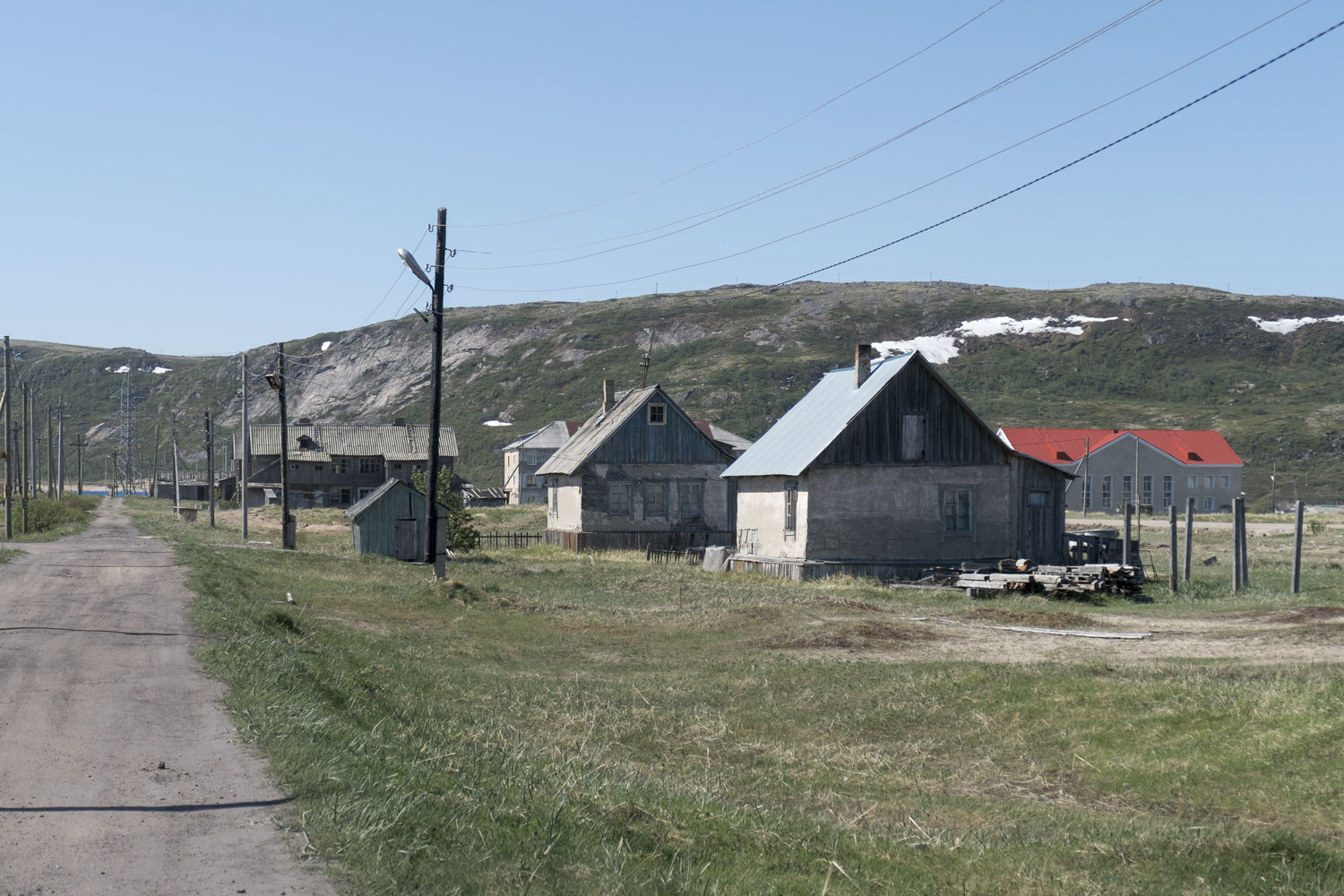
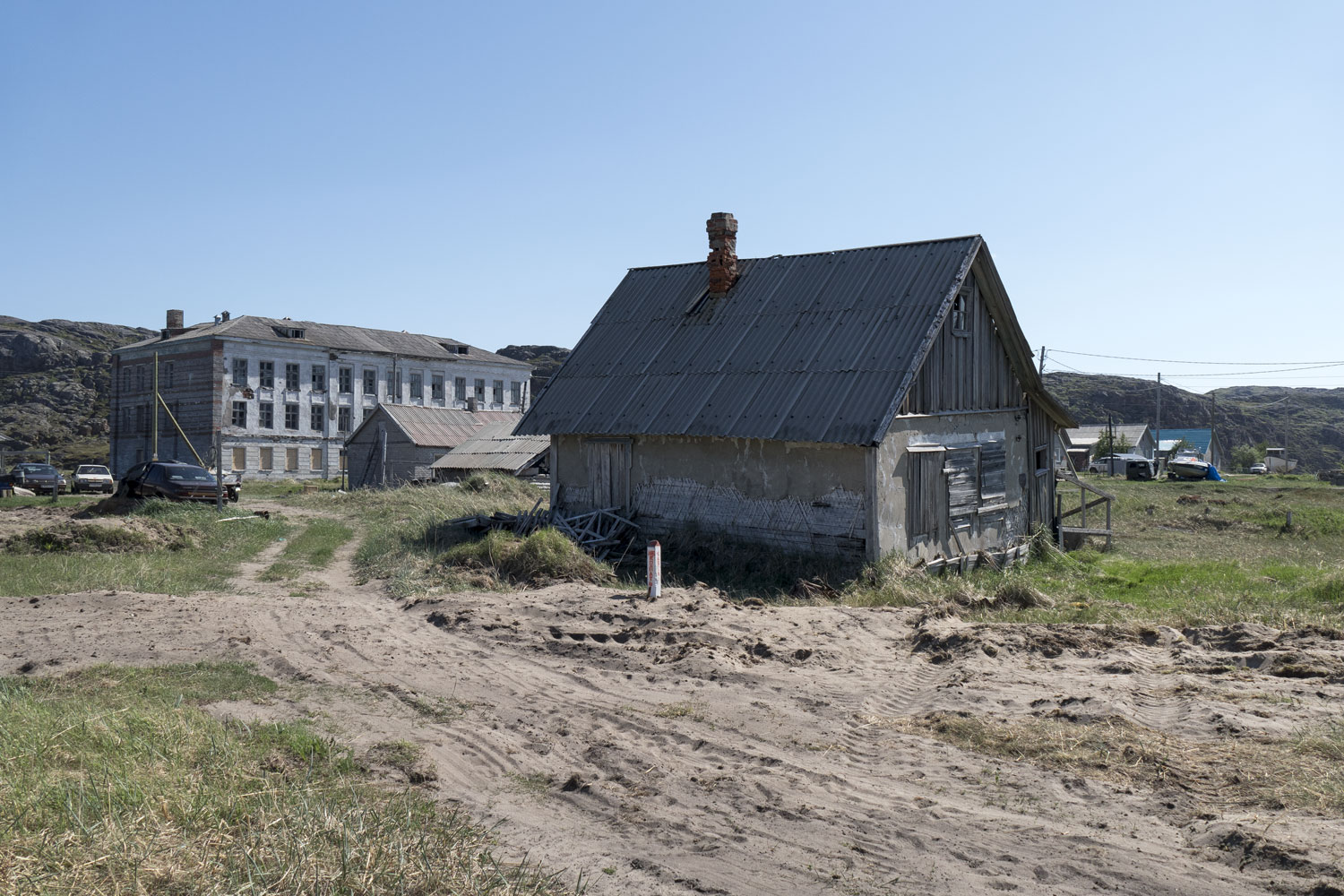
There are a couple of buildings that have been faced with siding and restored. They are either hotels or some kind of technical facilities.

Some houses still have people living in them. Or rather, they come to party on weekends.
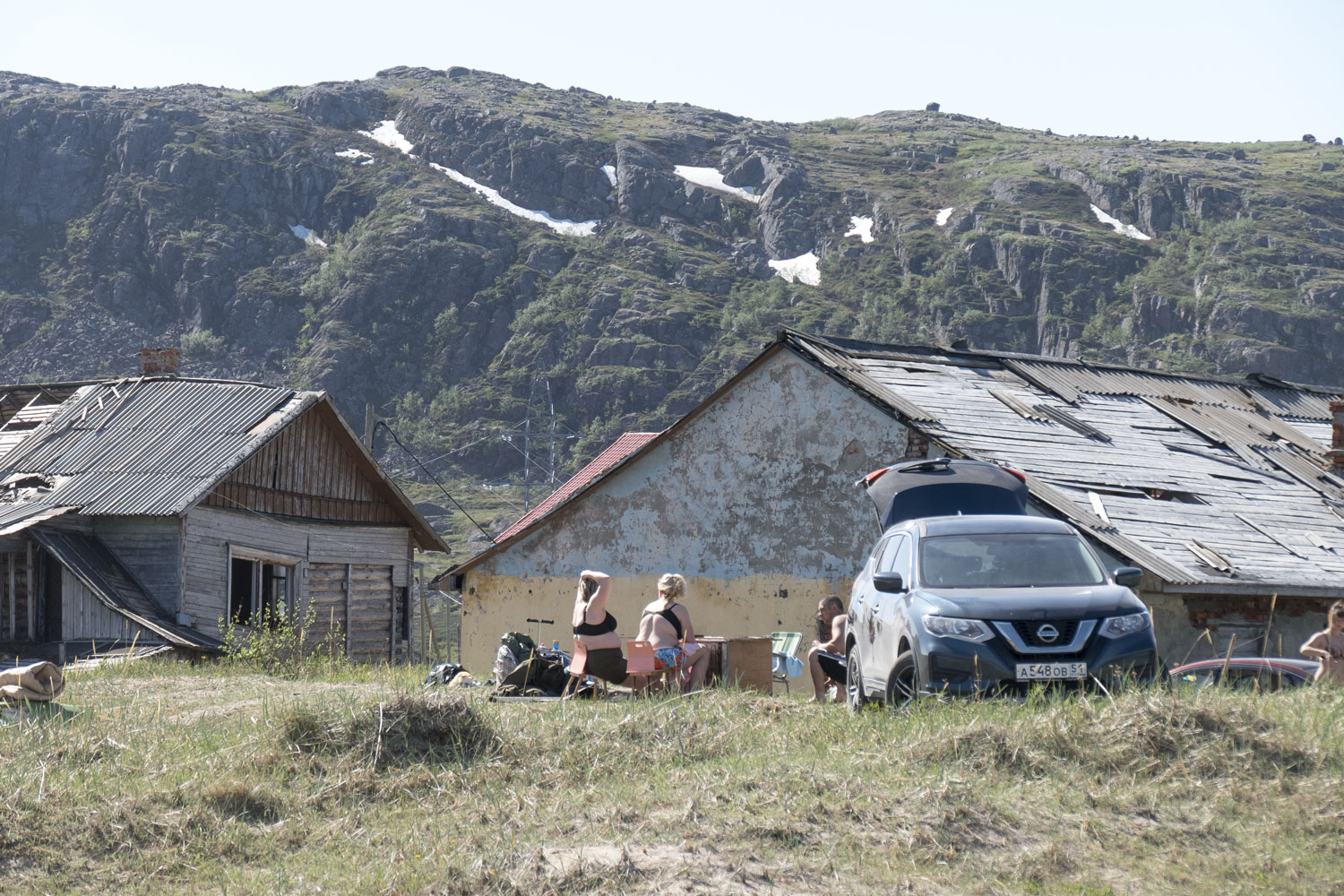
There are definitely people living in several houses. They are made of brick, and cars are parked in the yard.
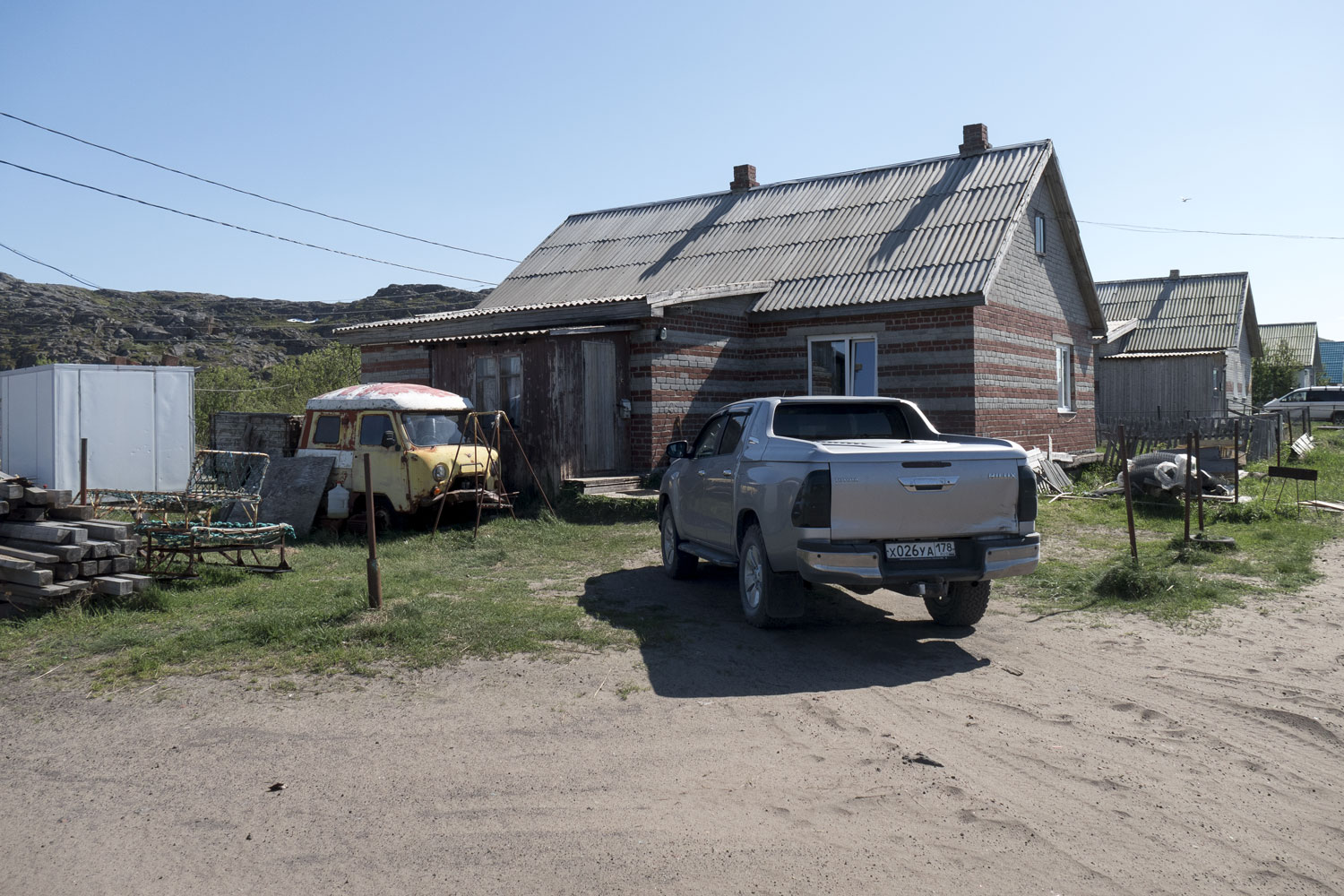
The rest settled in a couple of apartment buildings that exist in the village.
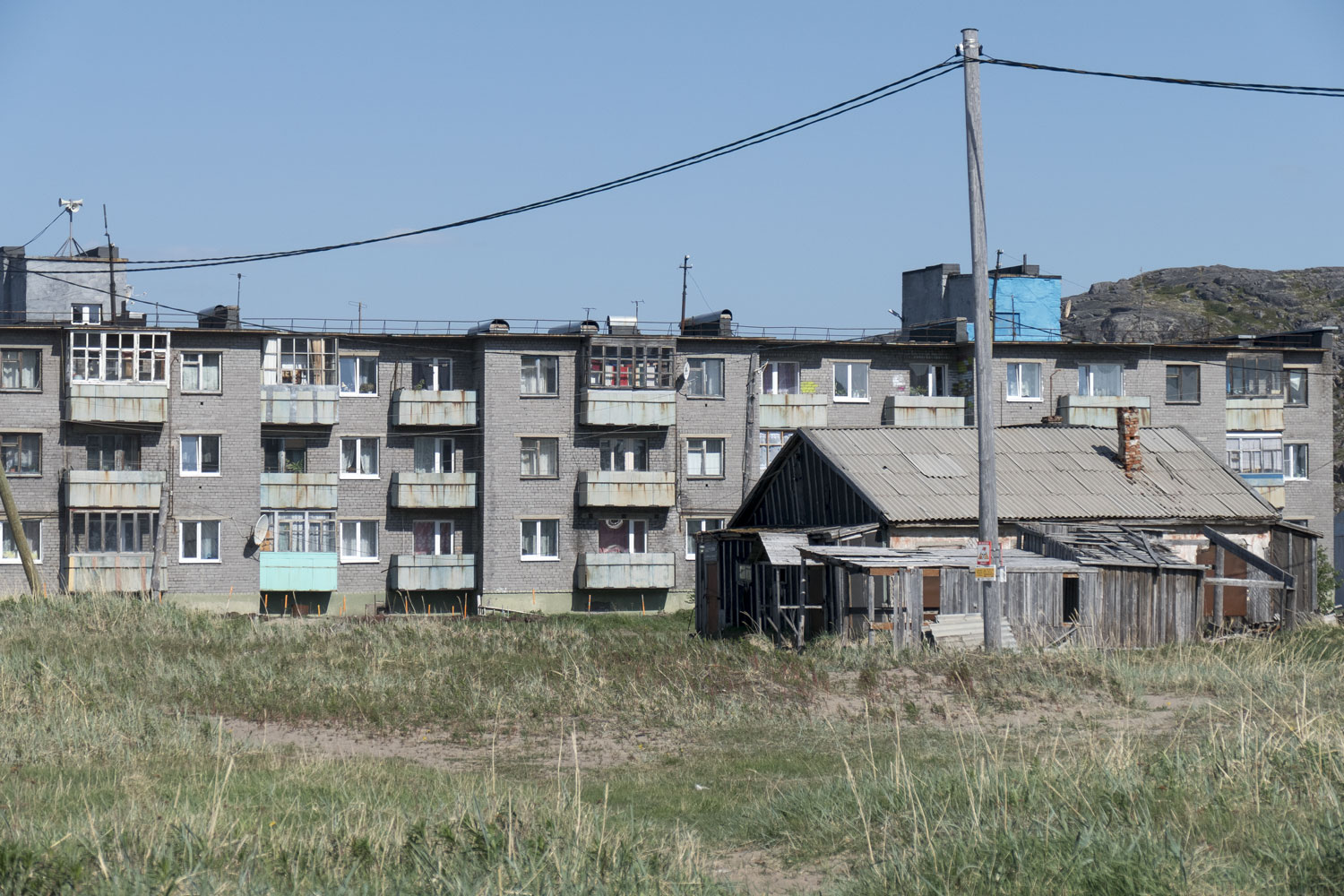
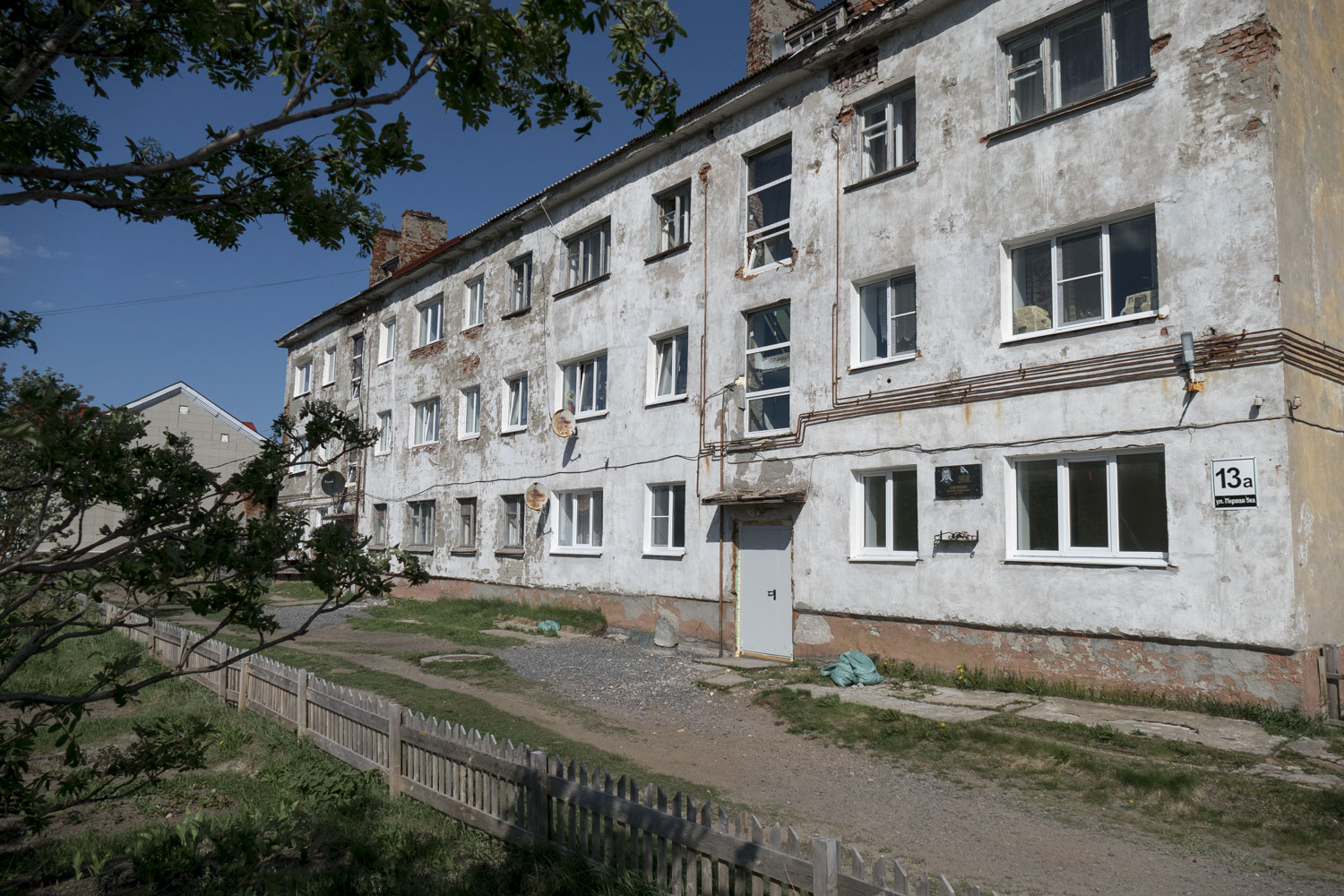
There is even a bus stop here, and a bus runs to Murmansk several times a day.
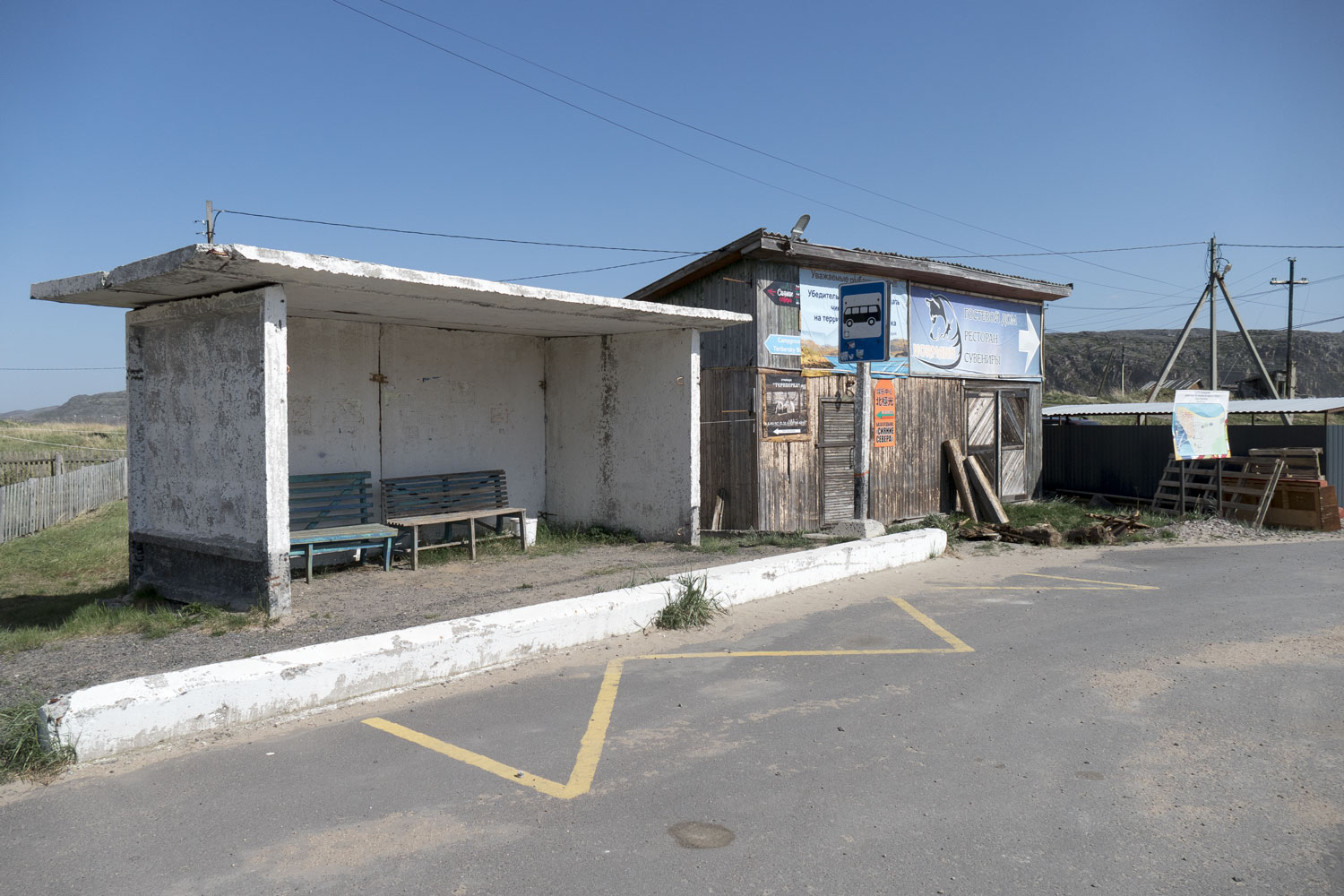
A three-story school building has been preserved in the village.
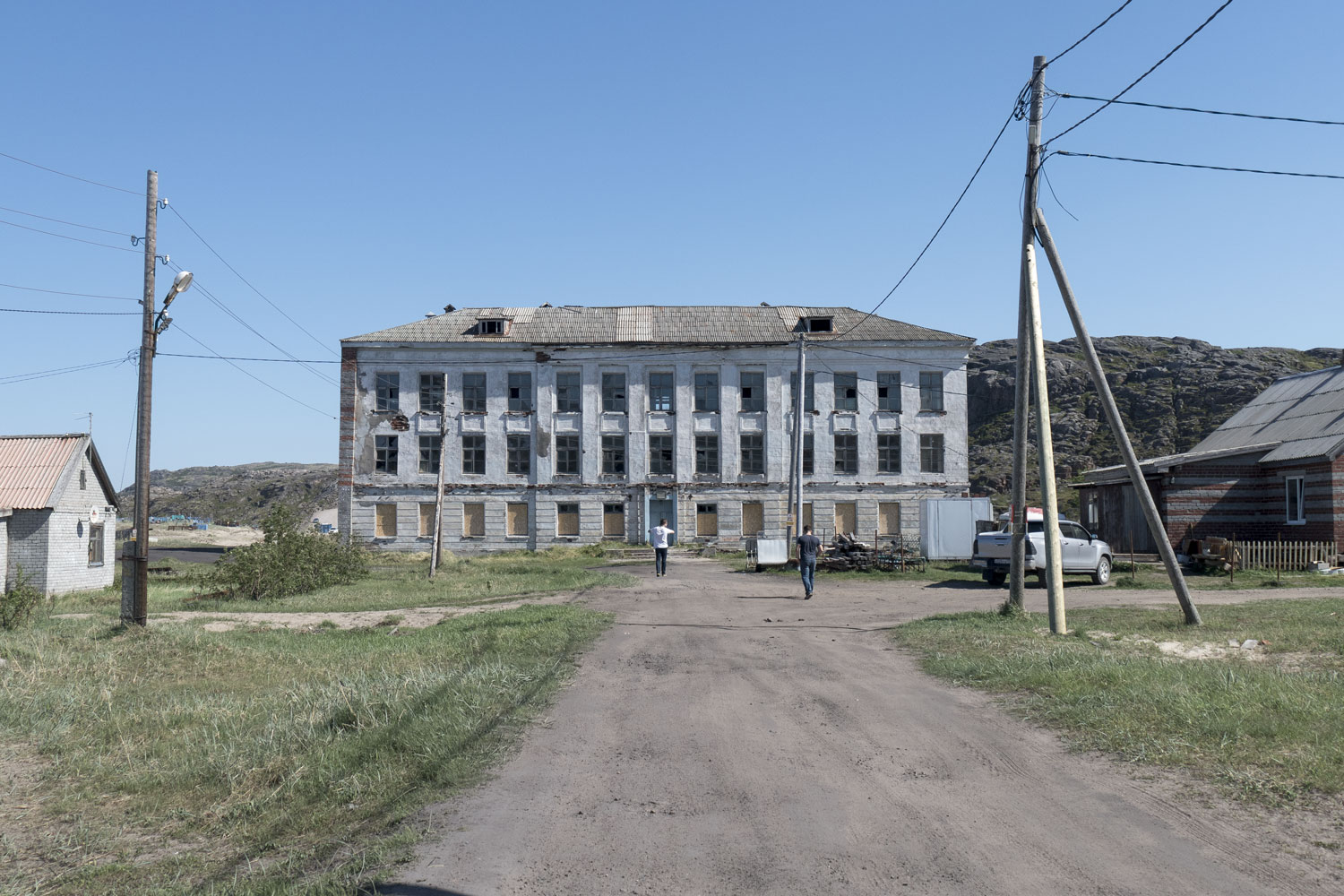
The Teriberka school is an art installation.
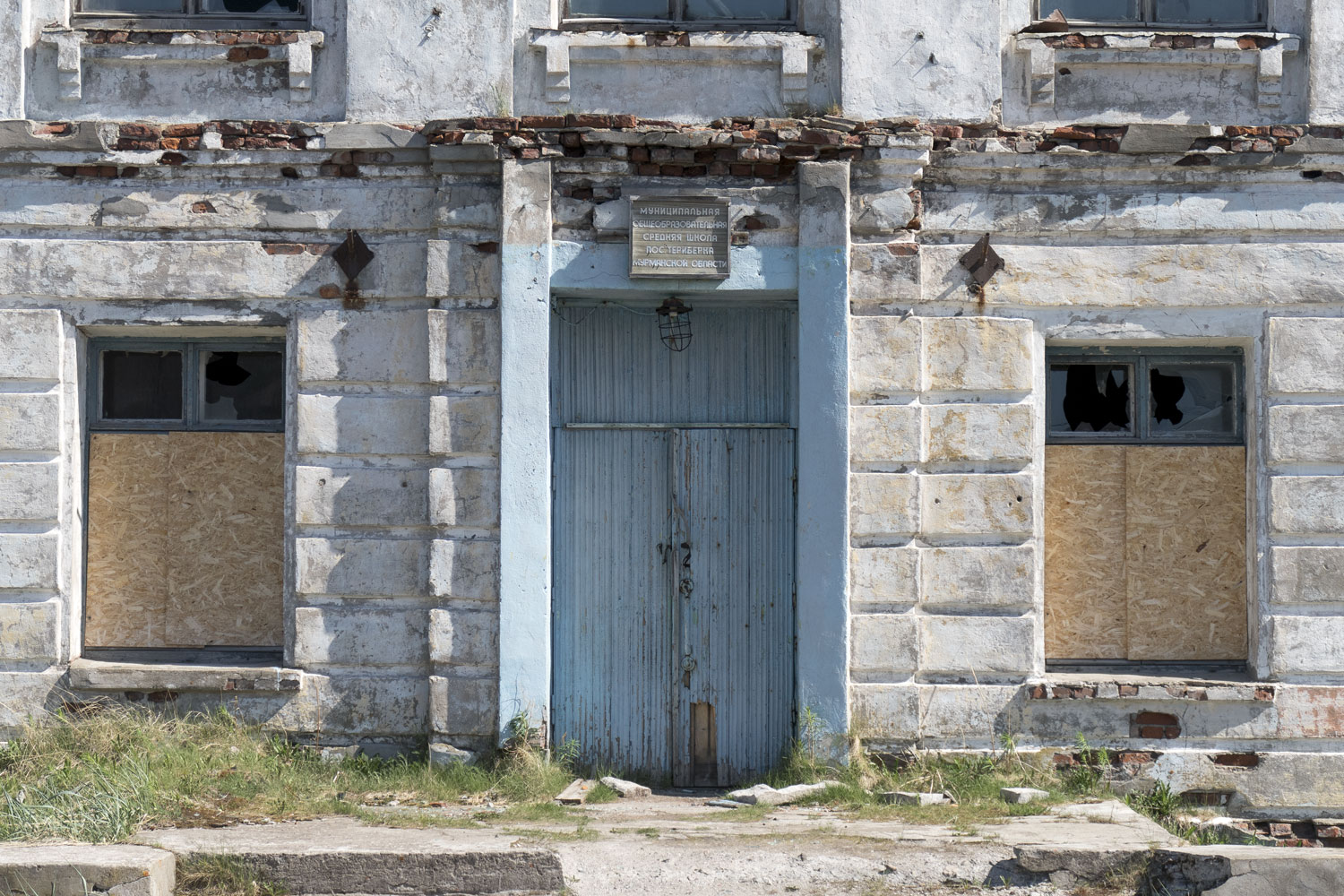
Postcard-like views of the village are frozen in its windows.
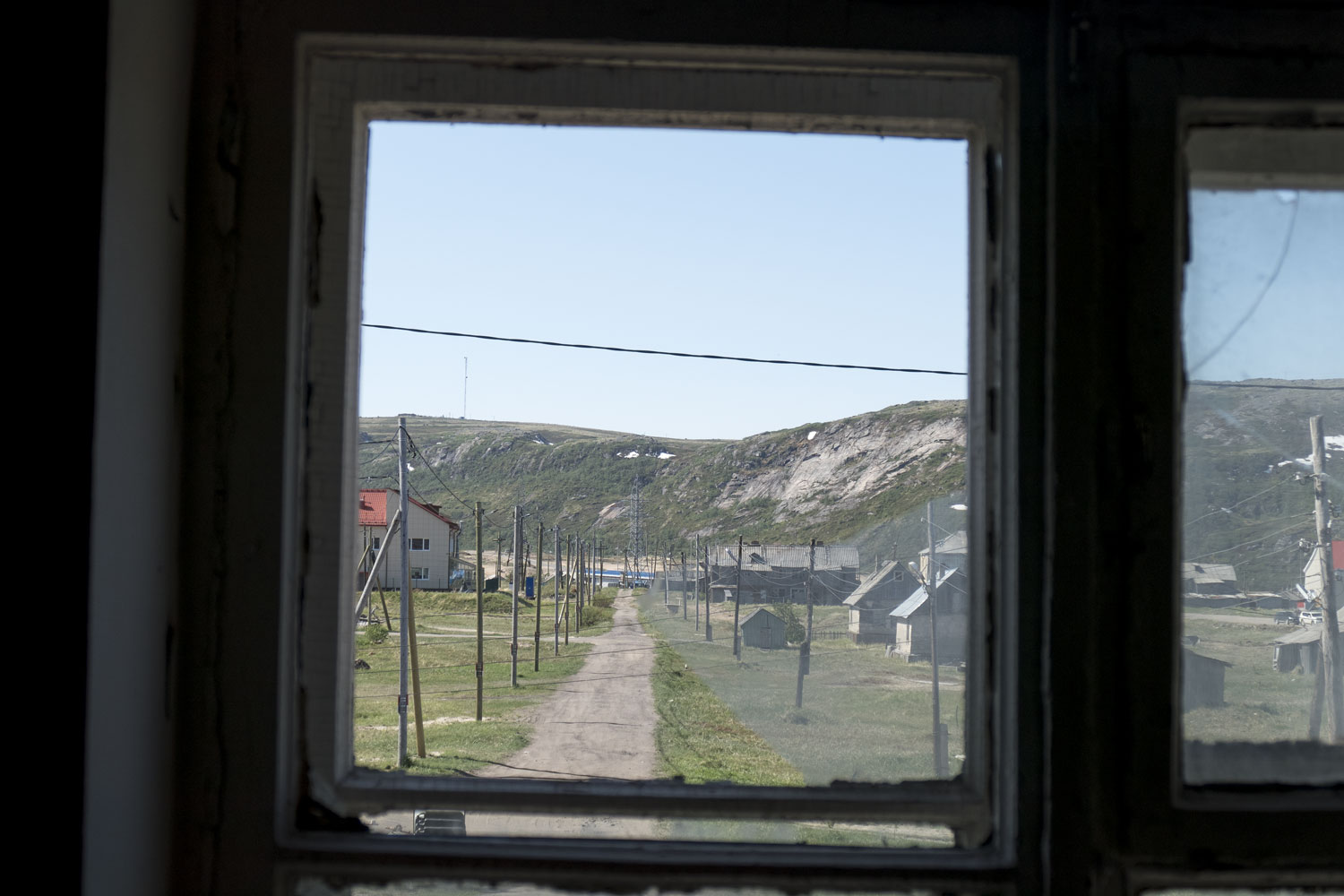
Inside, the school looks like a typical abandoned building in Pripyat. Scattered textbooks, stripped floors, and meaningful street art can be seen.
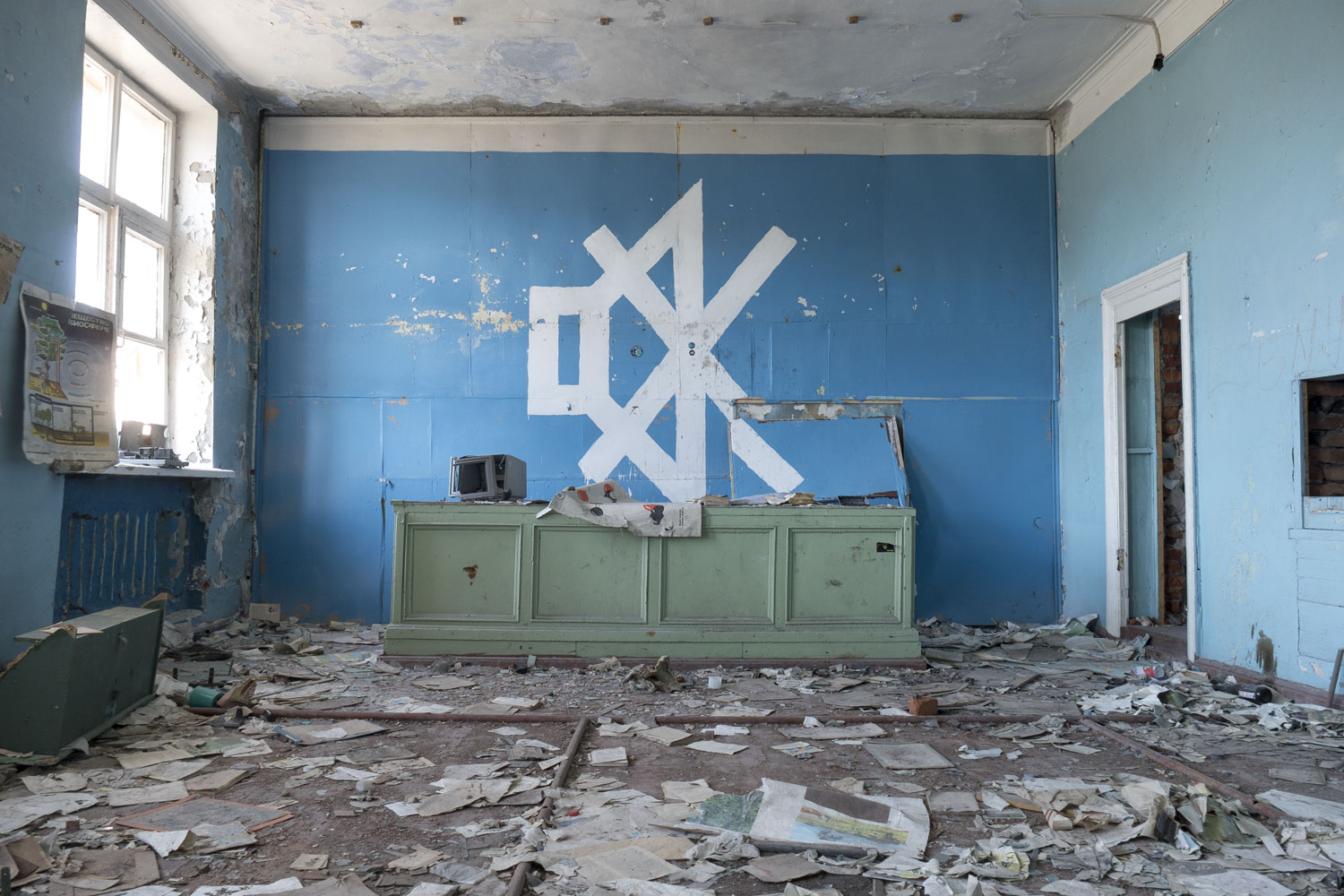
Teriberka became popular after the release of the film “Leviathan” directed by Andrey Zvyagintsev. The views of the dying village, especially the ship graveyard, impressed the audience so much that tourists began to flock to Teriberka. It is said that before the pandemic, 40,000 people visited the village each year.
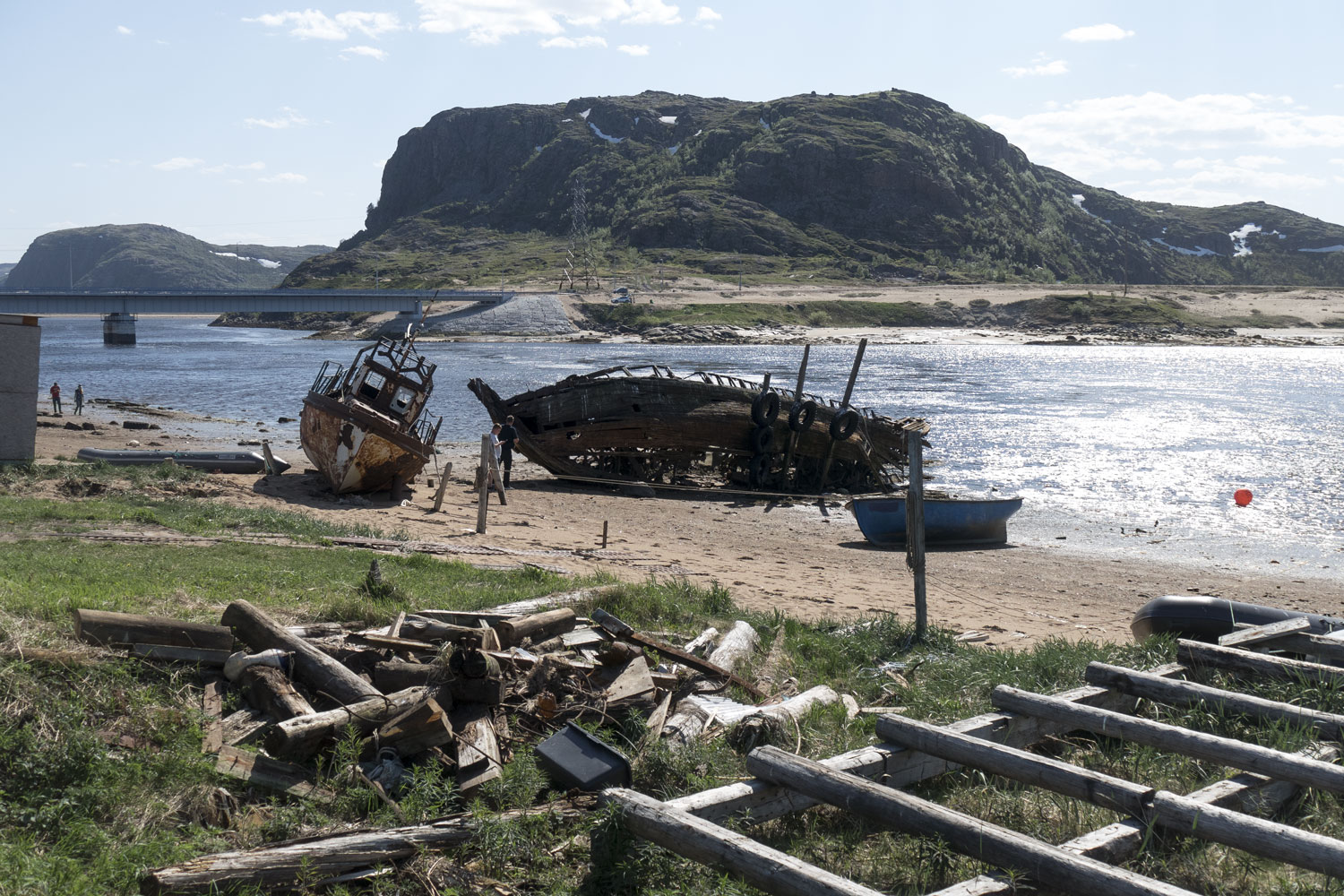
There were enough tourists to open a very good (and expensive) cafe in Teriberka.
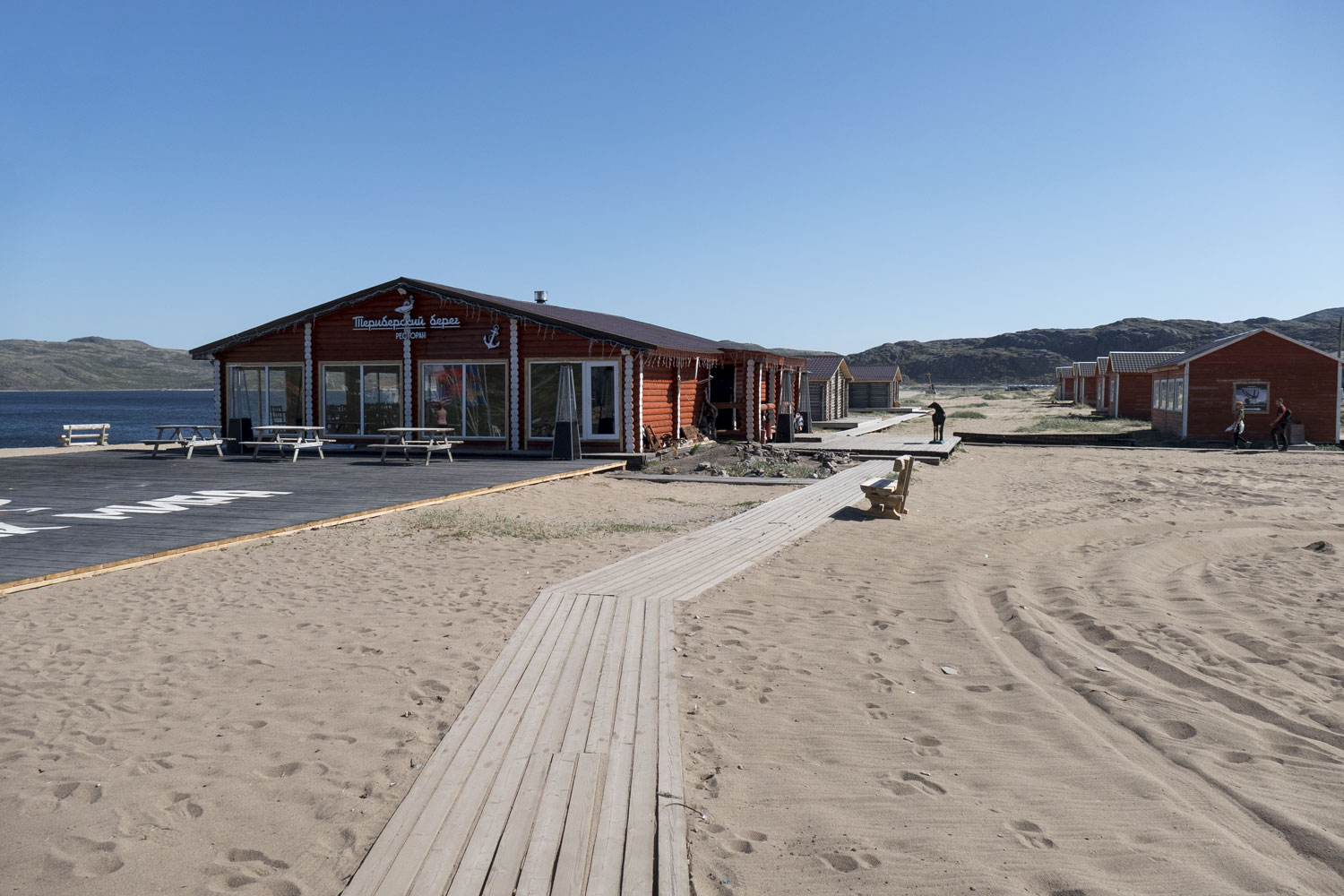
They even built several cool things here. For example, a wooden throne from “Game of Thrones”. In winter, you can take some really awesome photos here.
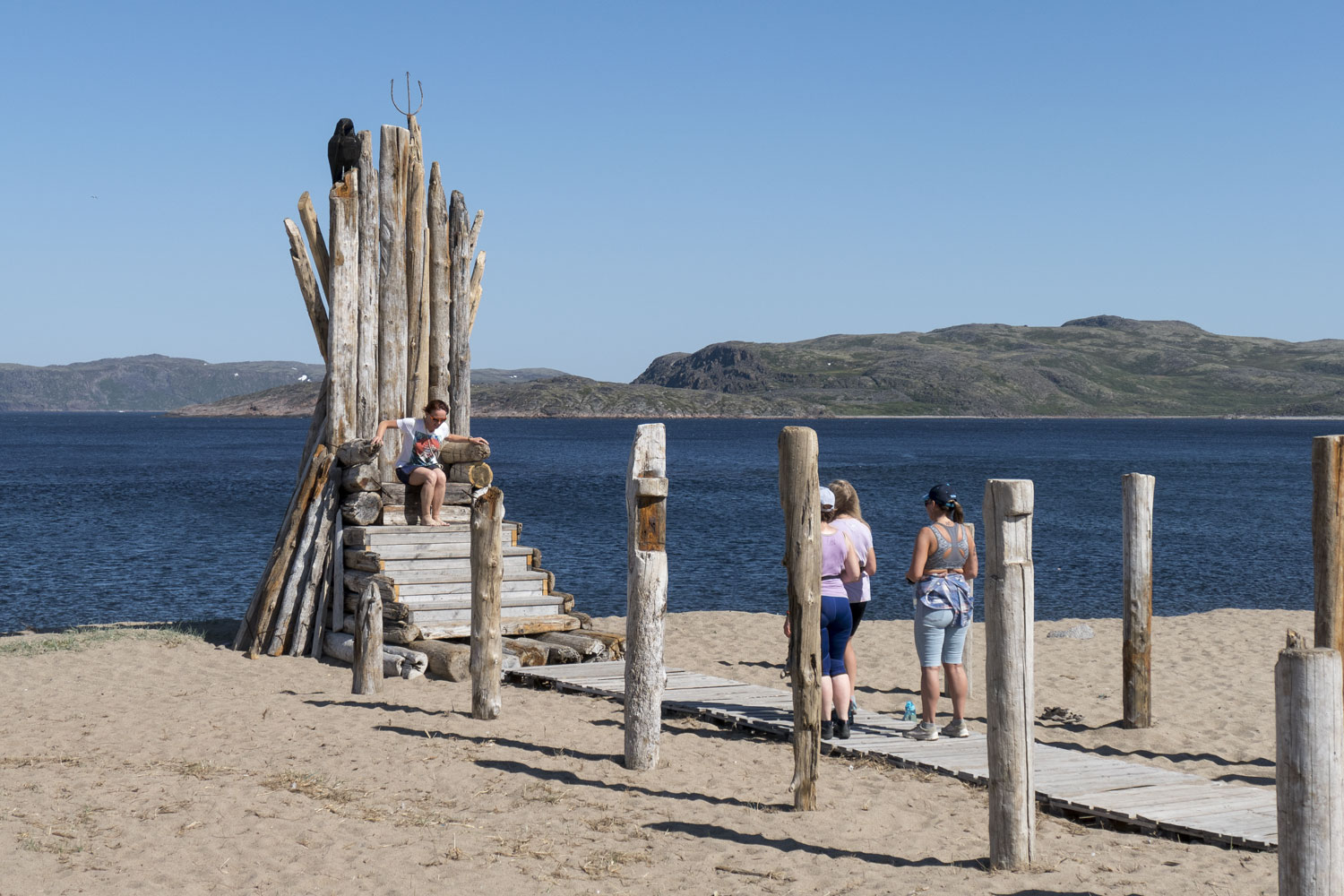
The Russian North has become so popular that people started coming here even from abroad. Flag poles with the flags of the USA, Finland, and other countries stand on the shore. Three Americans were walking on the beach when I was here — despite the pandemic.
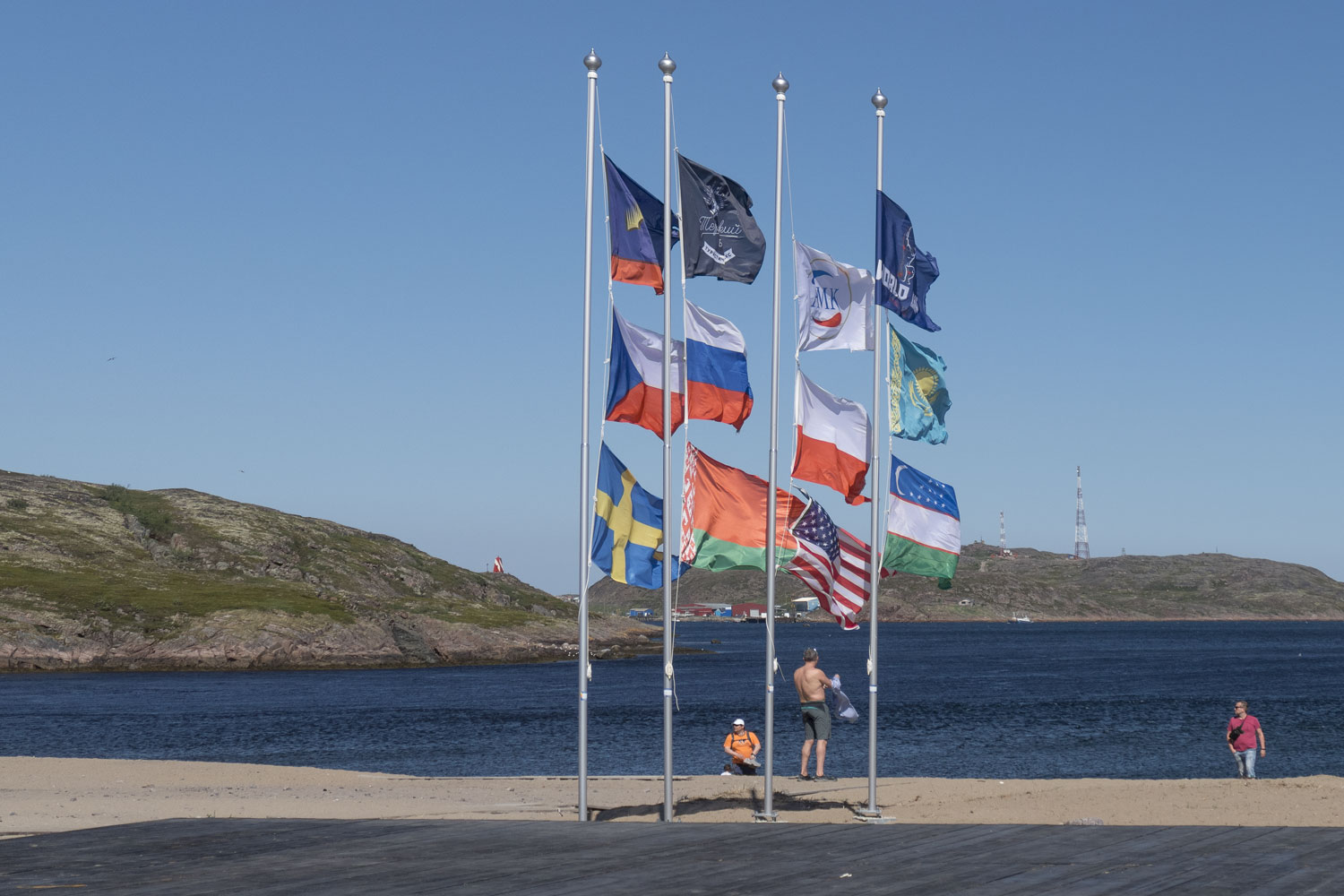
Yes, the beach. It’s beautiful. It’s impossible to say that this is the far north. However, such weather is a very rare occurrence for Teriberka. During my stay here, it was +25 degrees Celsius.
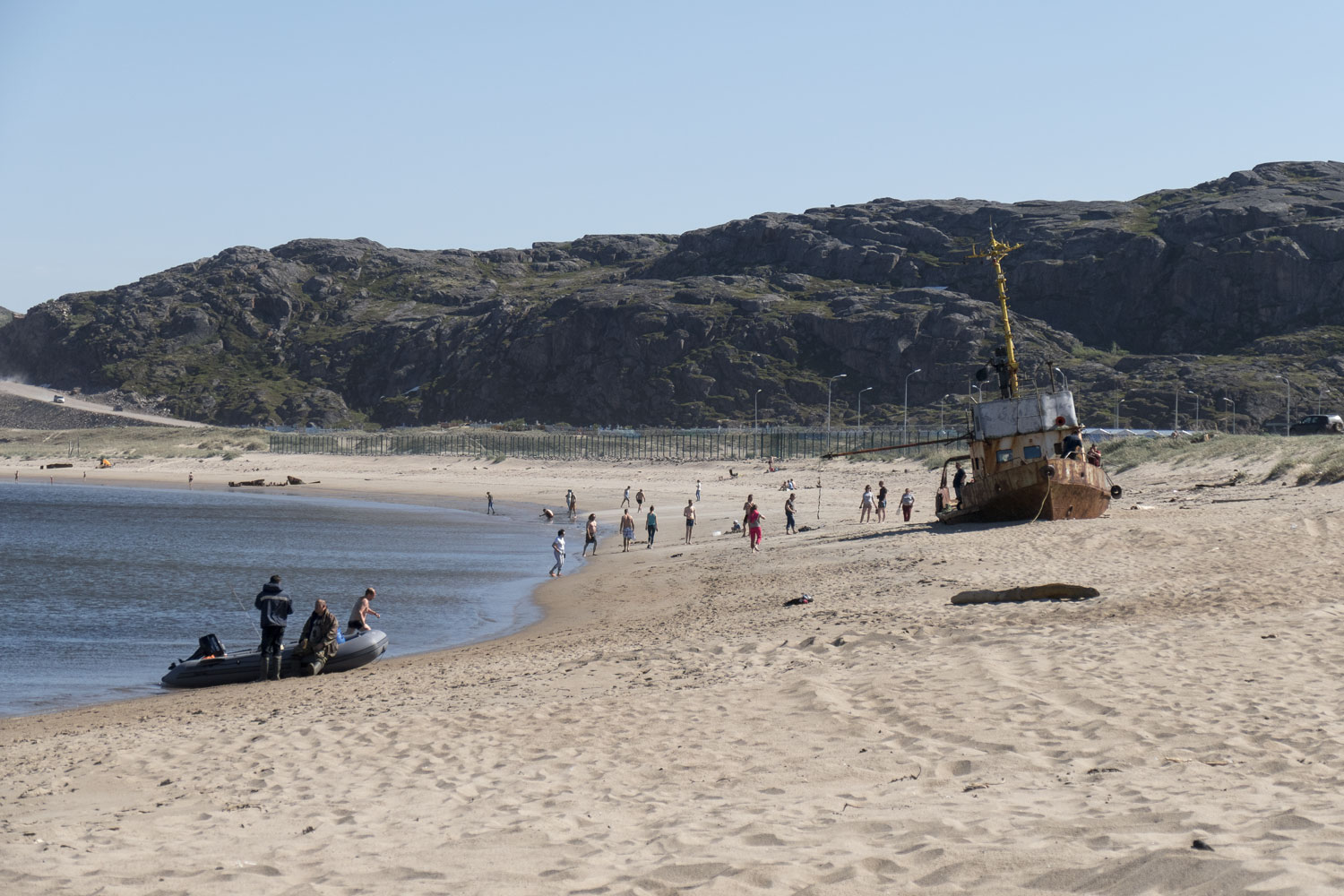
An abandoned fishing boat lies on the beach. It reminds me of the ship graveyard in Muynak.
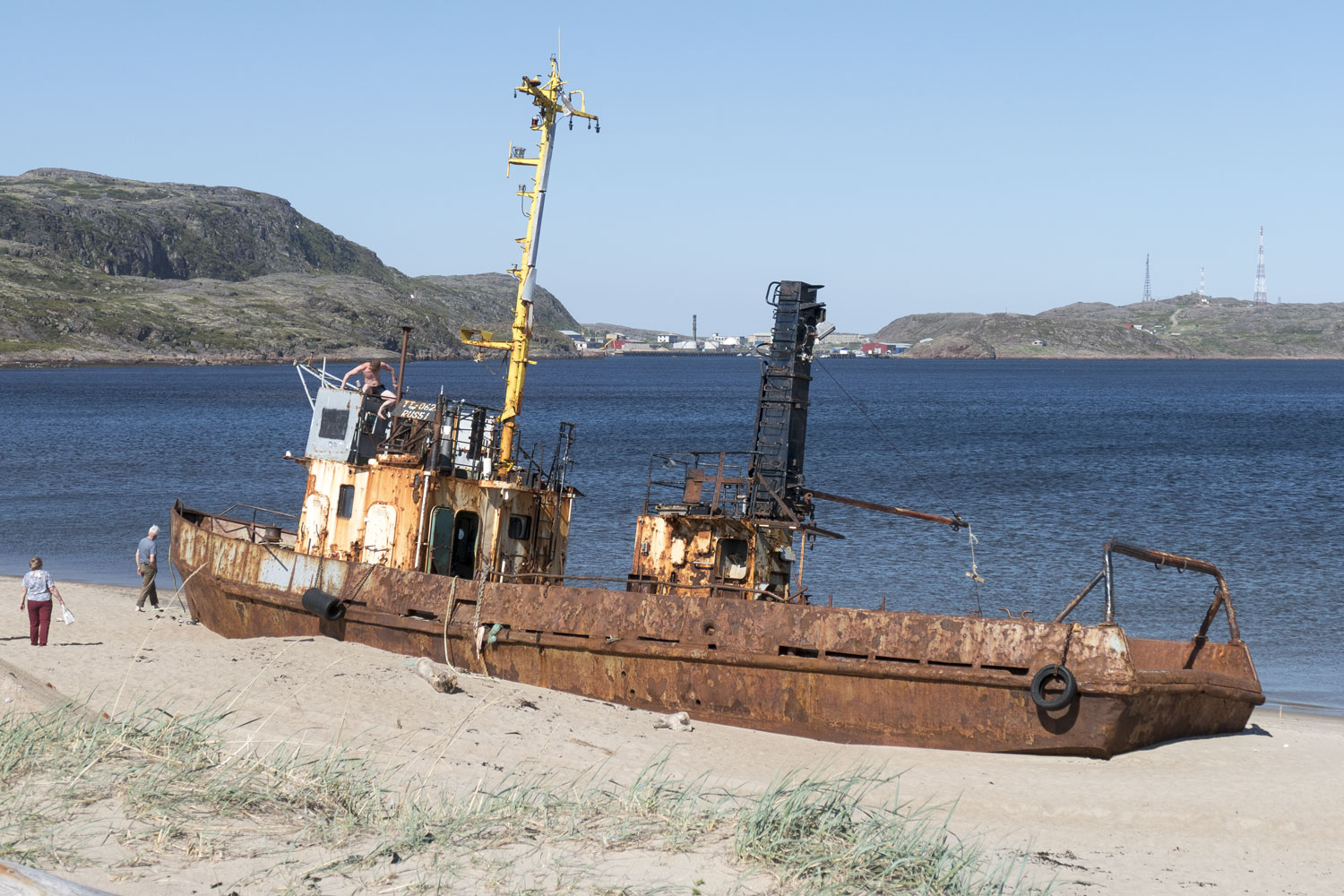
Tourists take photos, parodying the Titanic. Yeah, right.
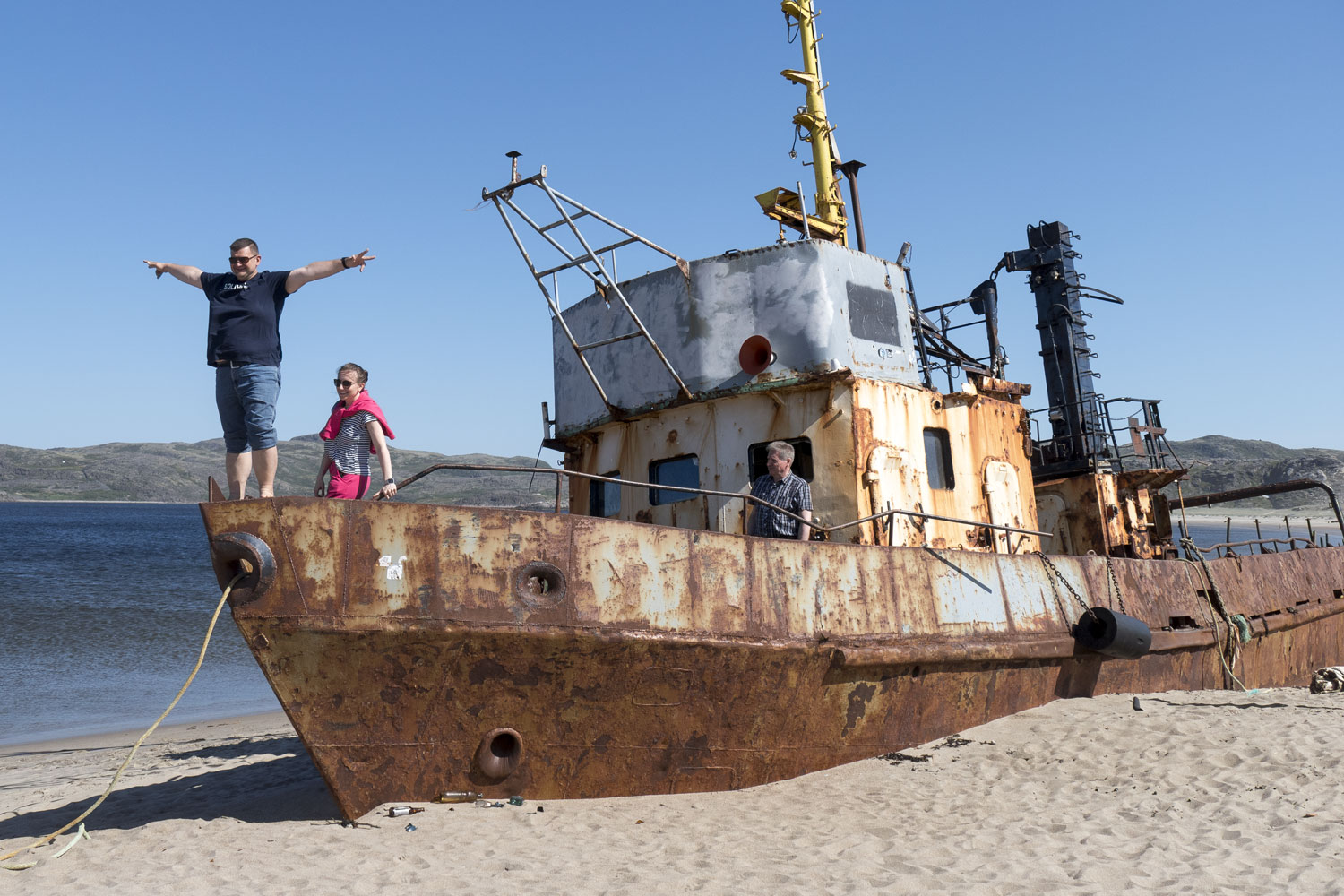
There is plenty of shipwreck in Teriberka. This is not the only rusty ship.
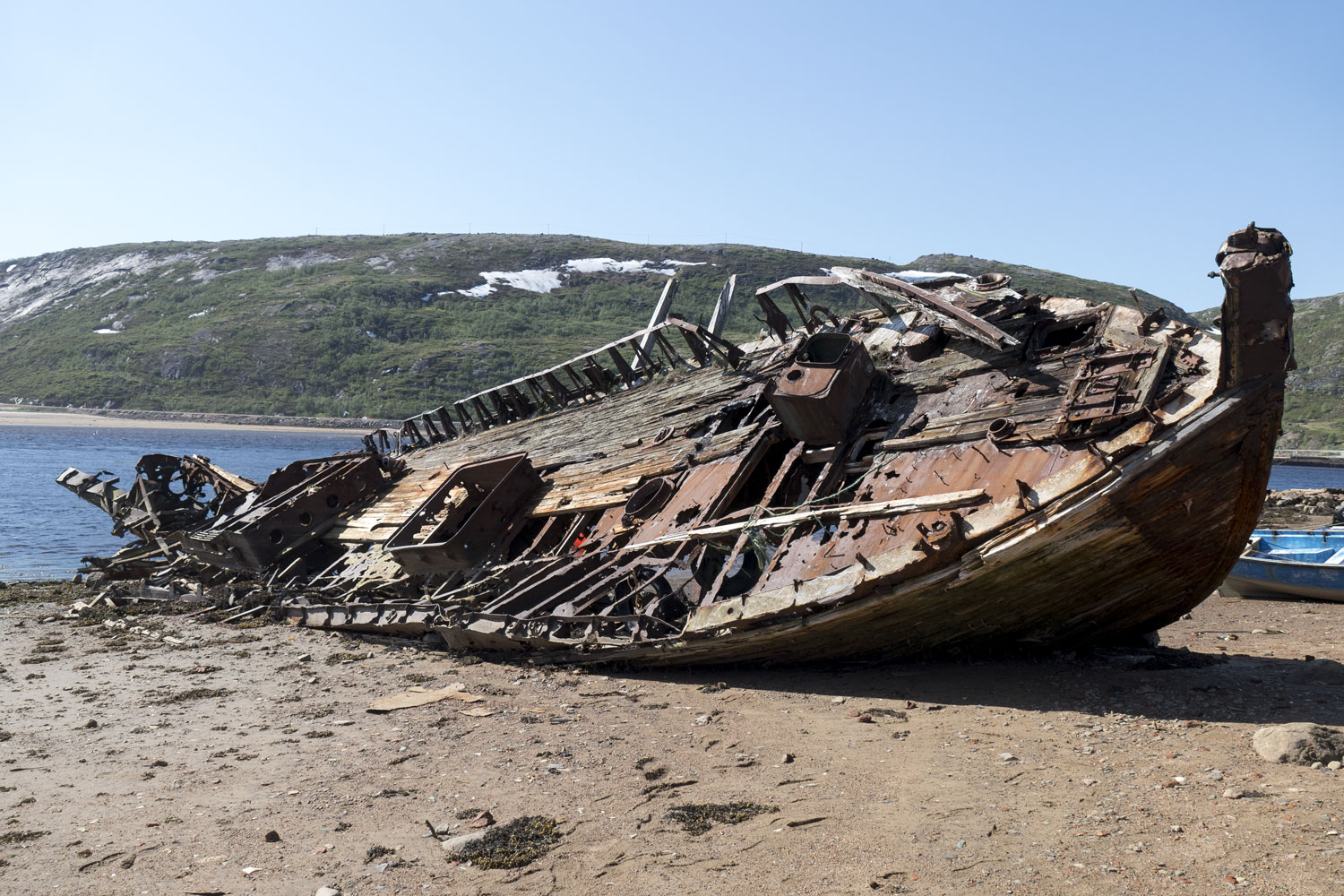
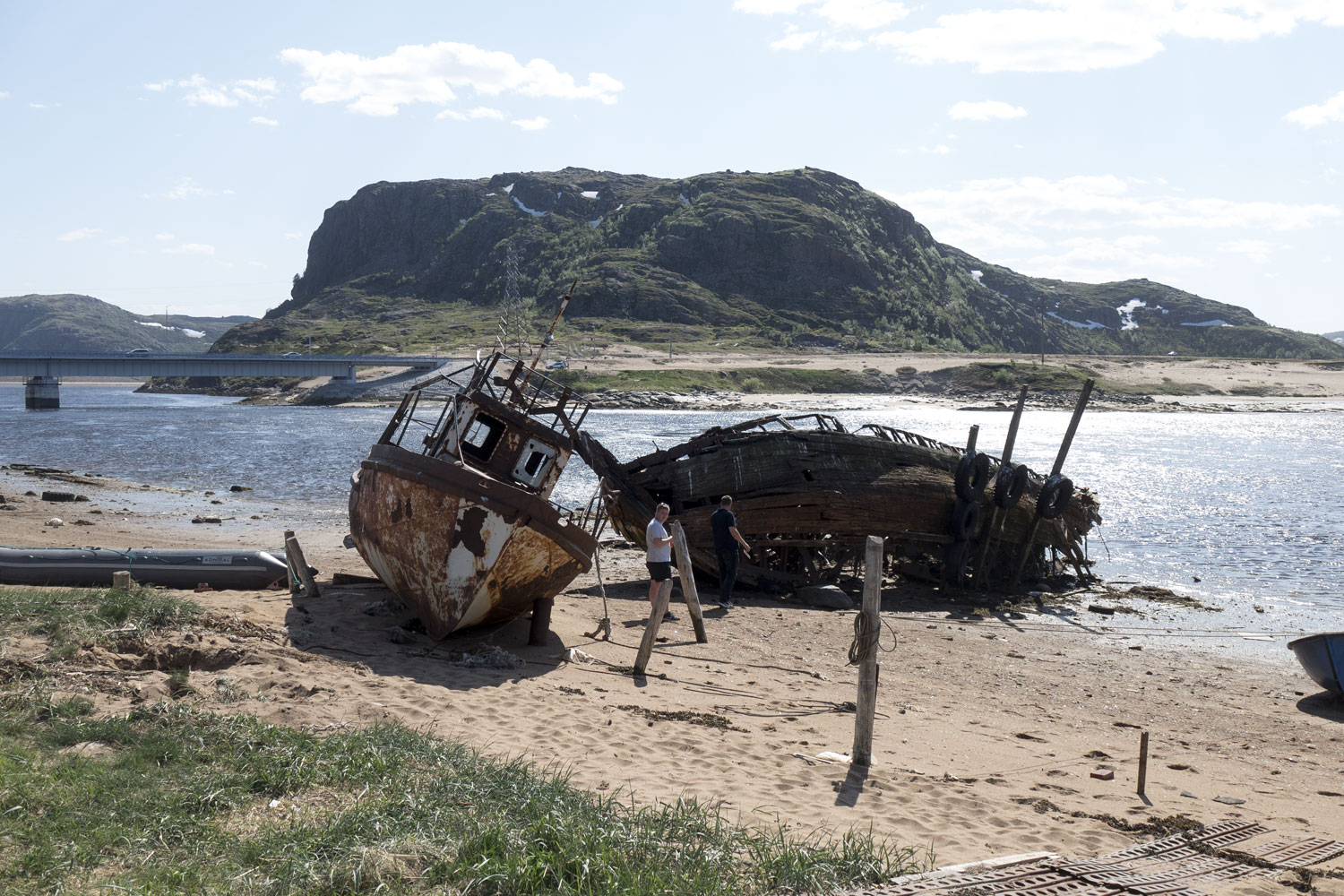
There are both broken docks and modern boats on which fishermen and tourists ride.

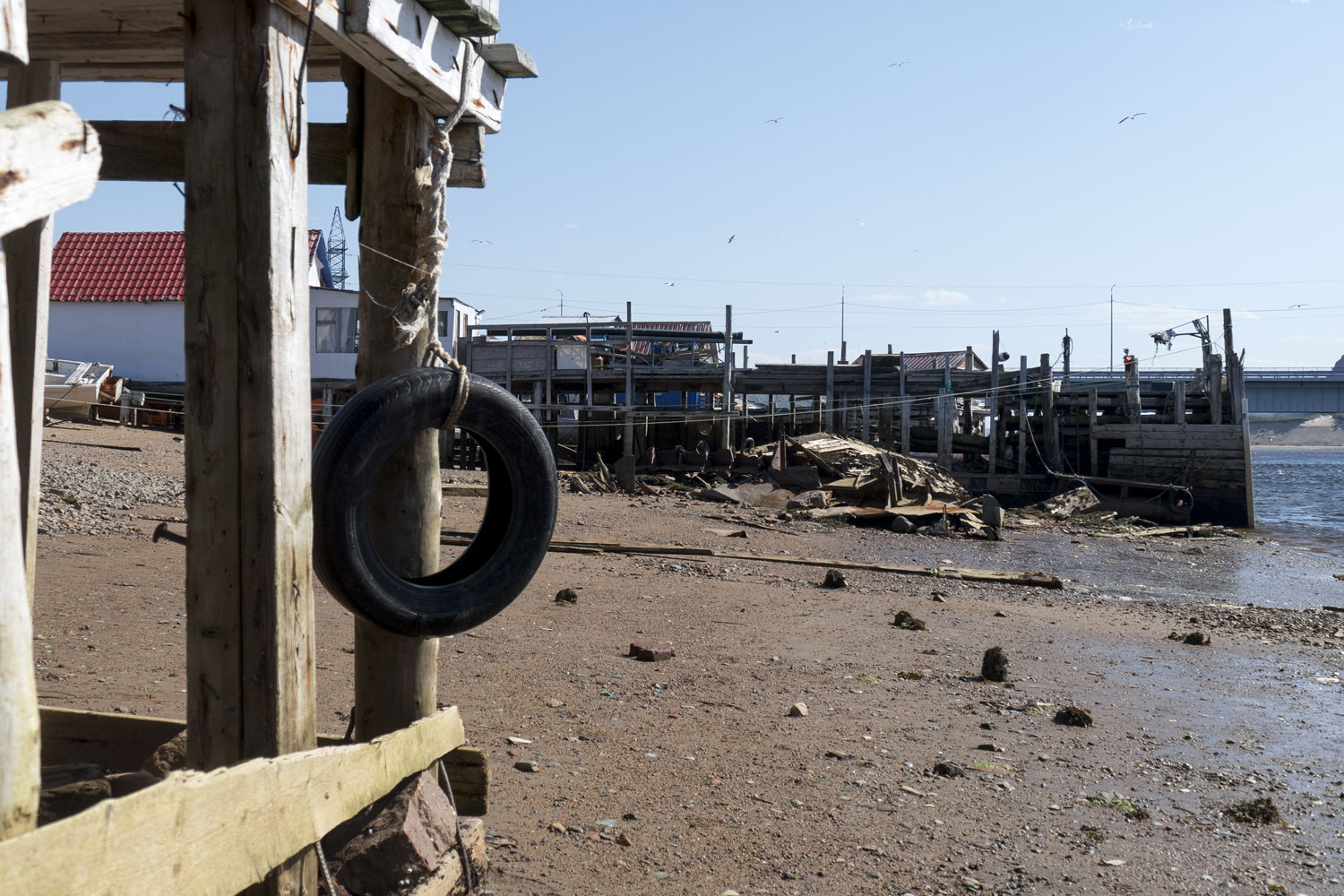
Just off to the side is a real graveyard of ships. In the 1960s, Murmansk began developing a fishing port and fish processing plant. That’s when the crisis began in Teriberka. Ships were abandoned, and people left. Since then, the remains of wooden ships — about twenty of them — have been decaying in the former Teriberka bay.
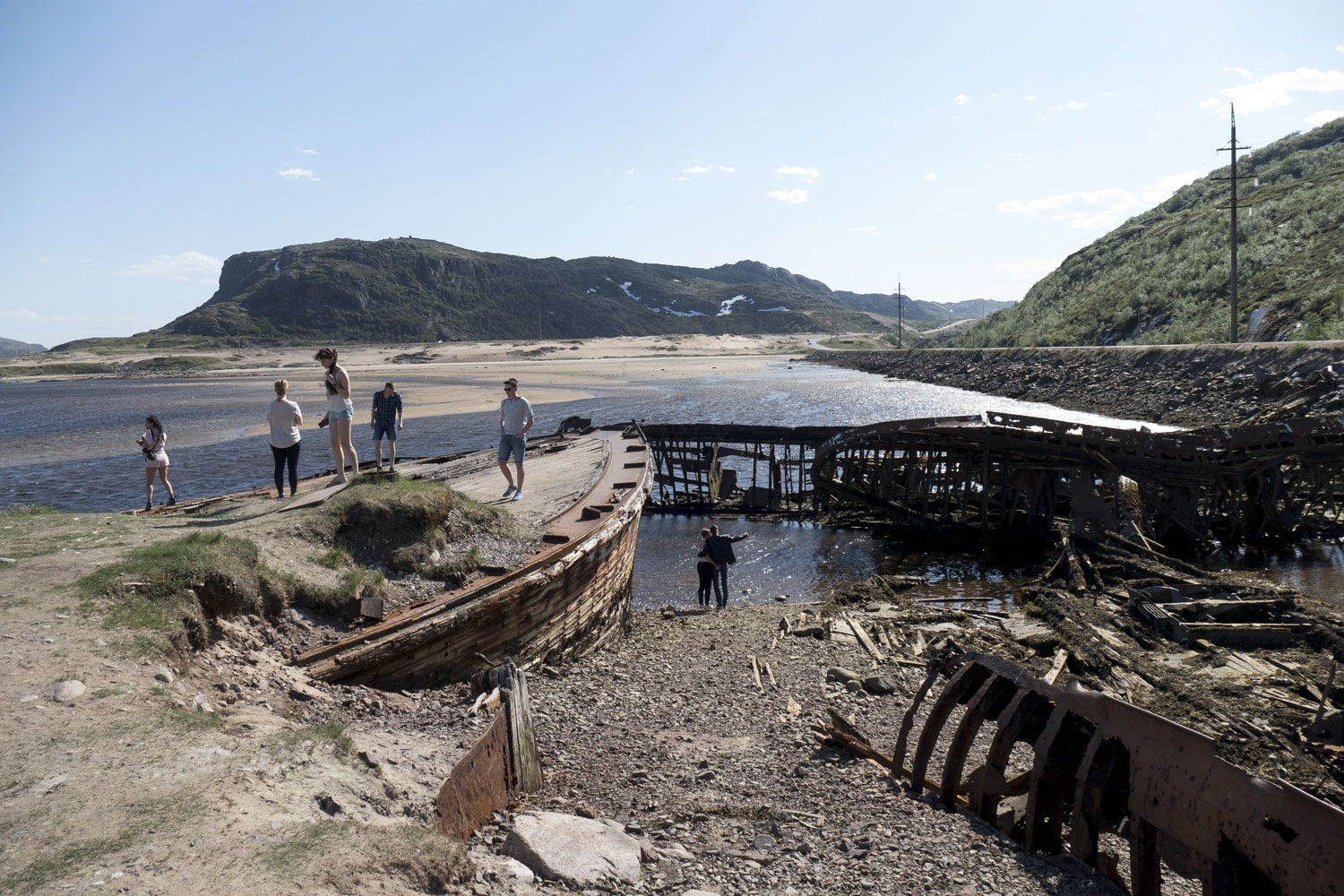
The ship graveyard in Teriberka is one of the most photographed places in Russia. Director Zvyagintsev’s imagination turned the remains of these ships into bones of the biblical monster Leviathan. The English philosopher Thomas Hobbes gave a new meaning to Leviathan, calling it the state — and it was this monster that devoured the main character of the film.
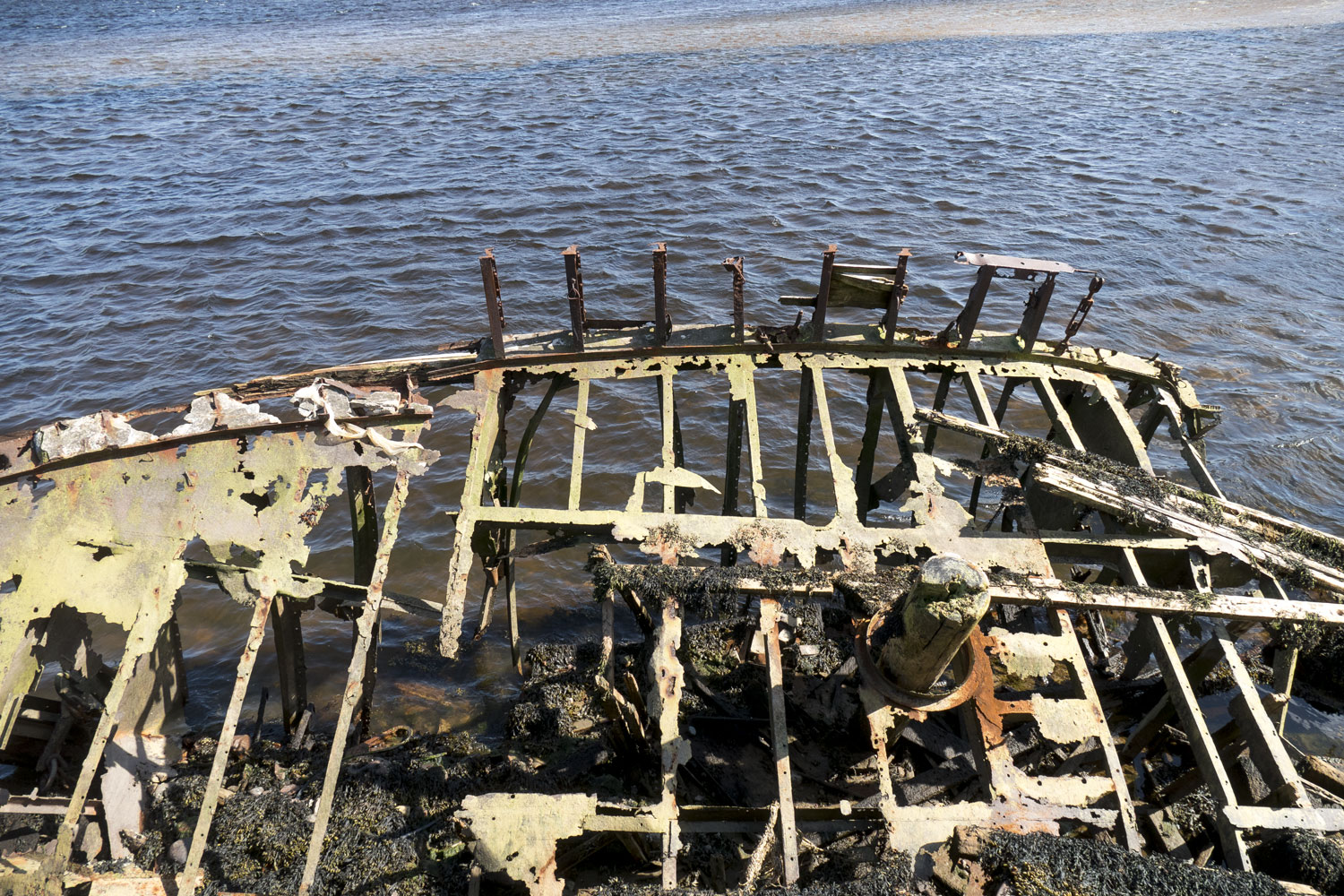
Of course, there’s not much left of the ships. They have merged with the ground. This is not boards — it’s the deck.
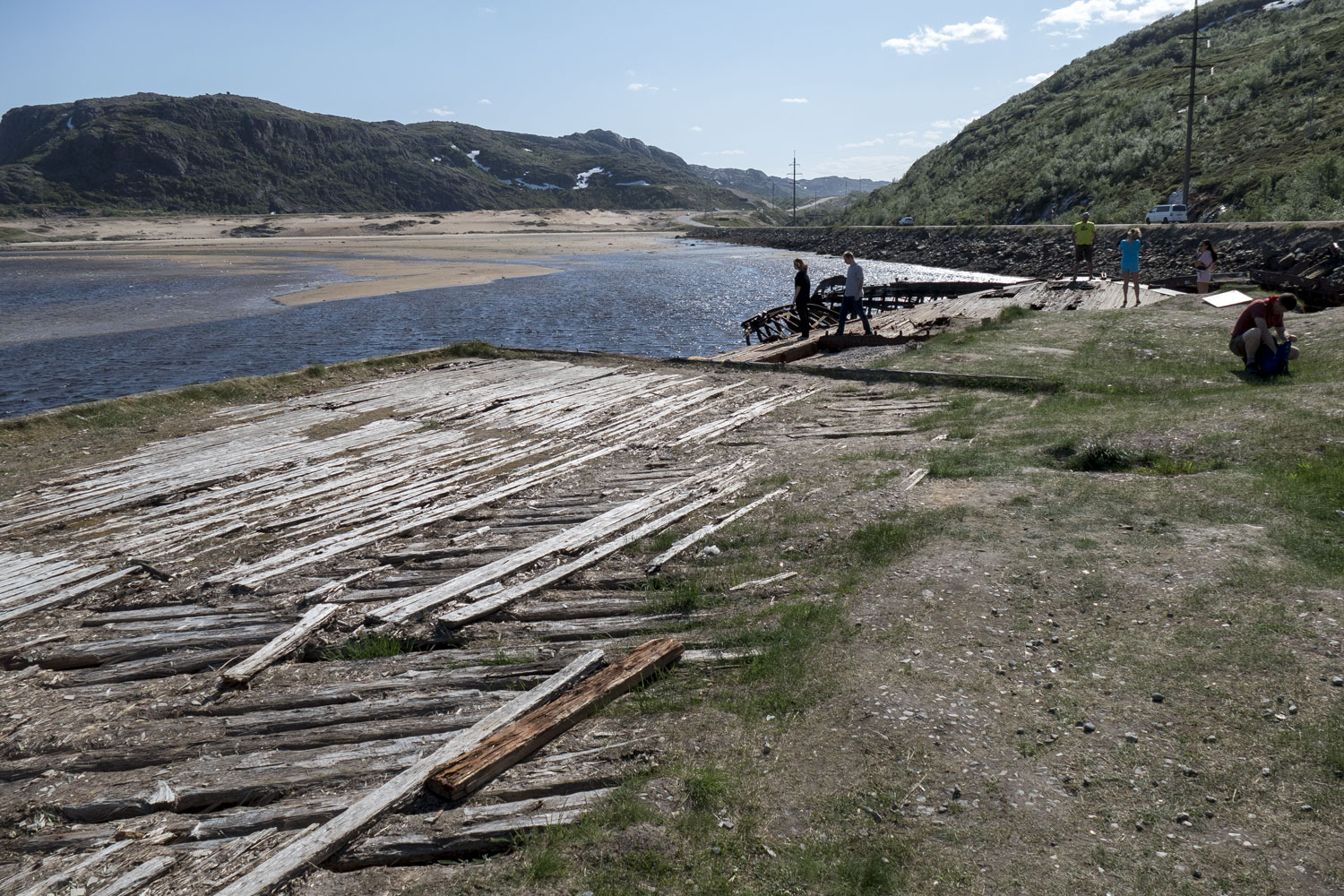
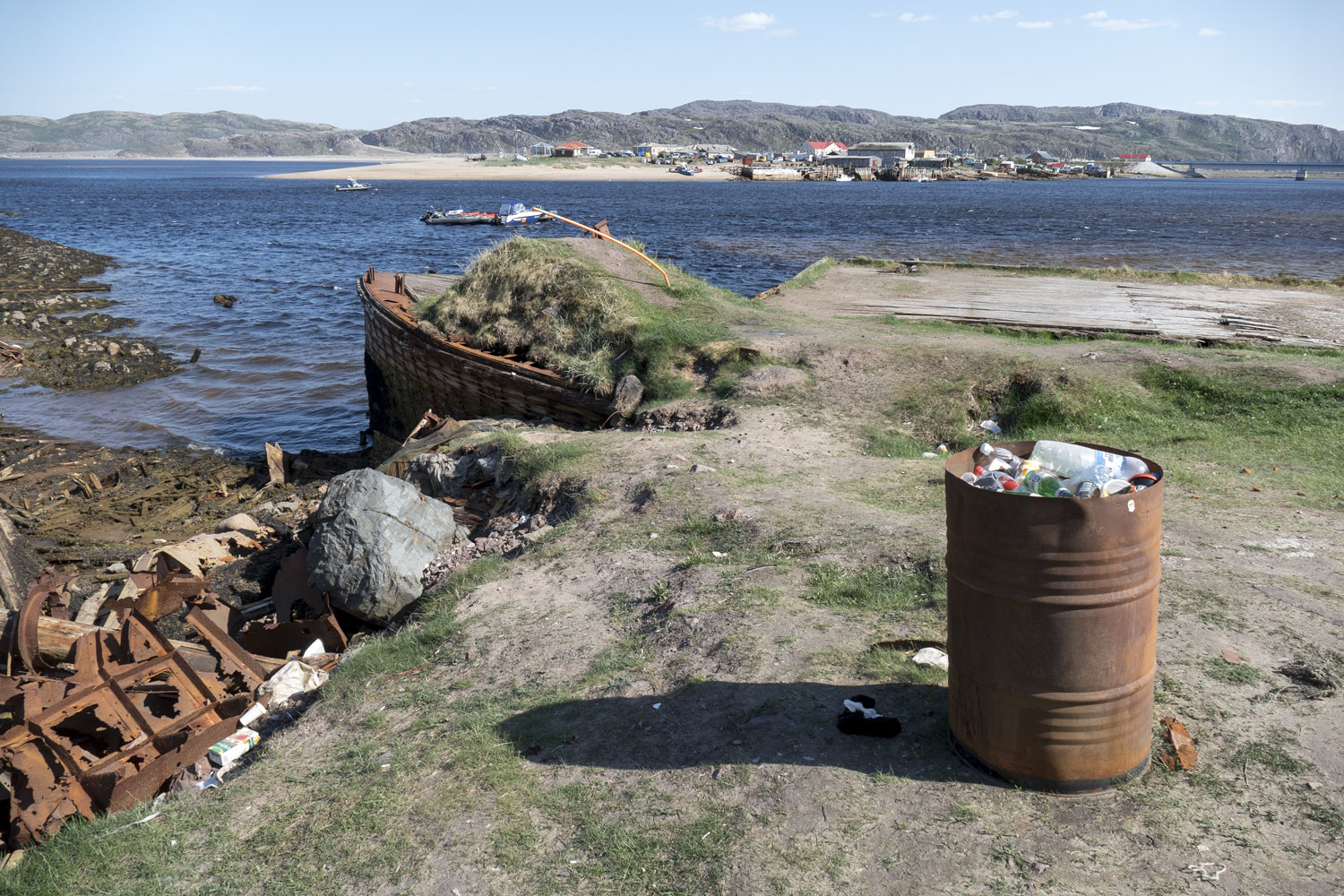
The Barents Sea.
The village of Teriberka winds around a small bay, a gulf called Lodeynaya Guba. If you drive along the shore of the gulf to the north, you can find more interesting places.
At first, the village gradually turns into individual houses where there is even more destruction.
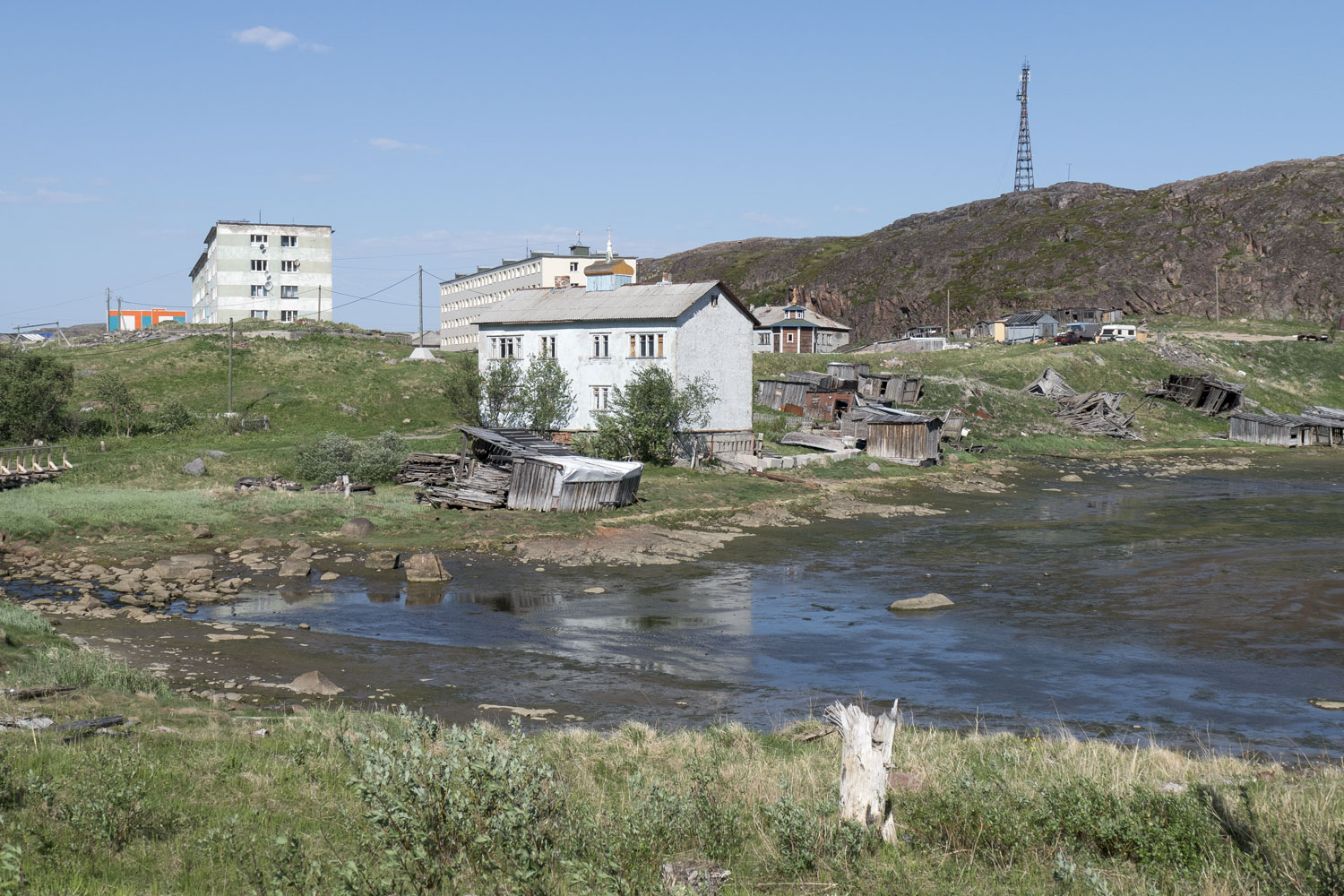
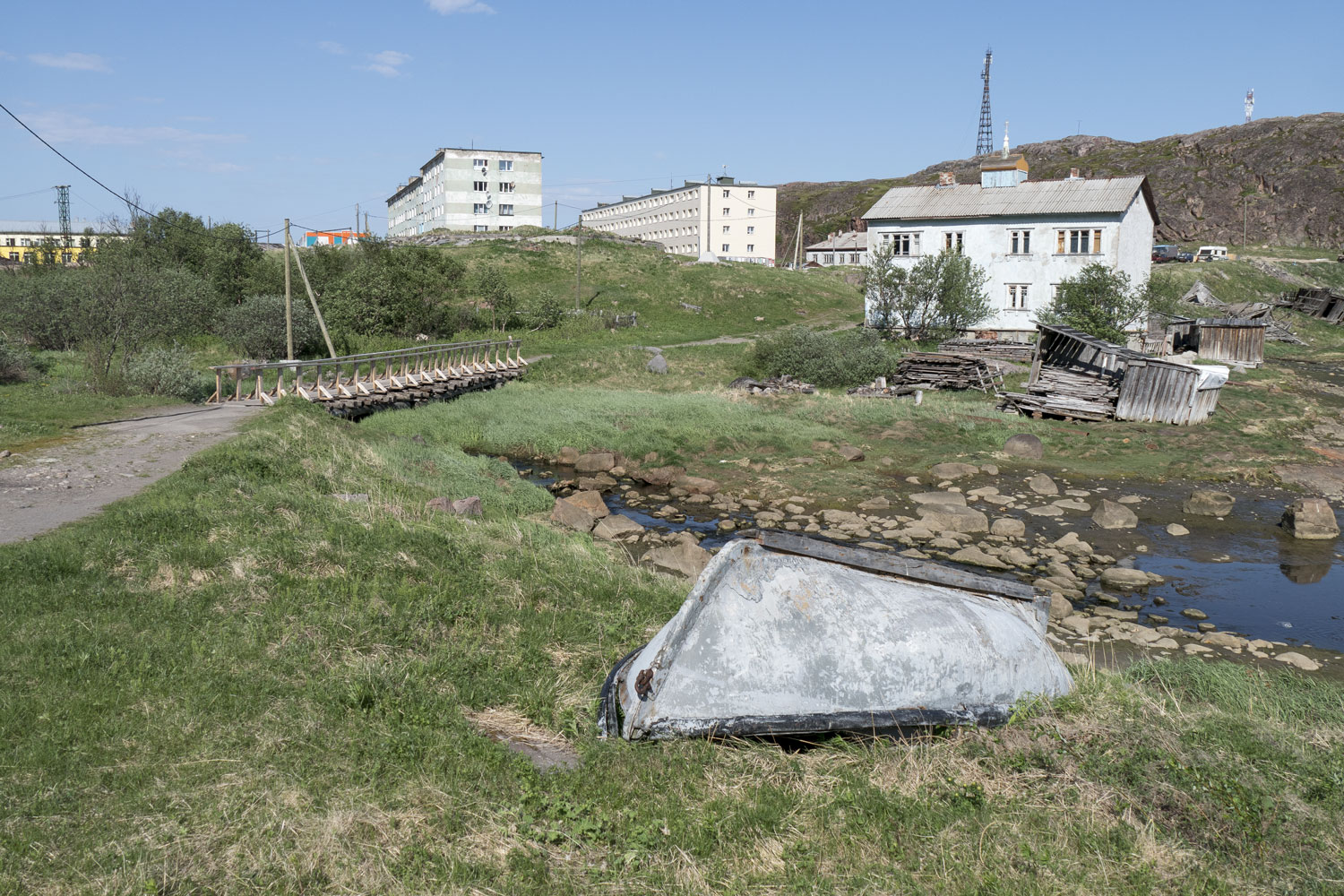
The last outpost that catches the eye is the fish market.
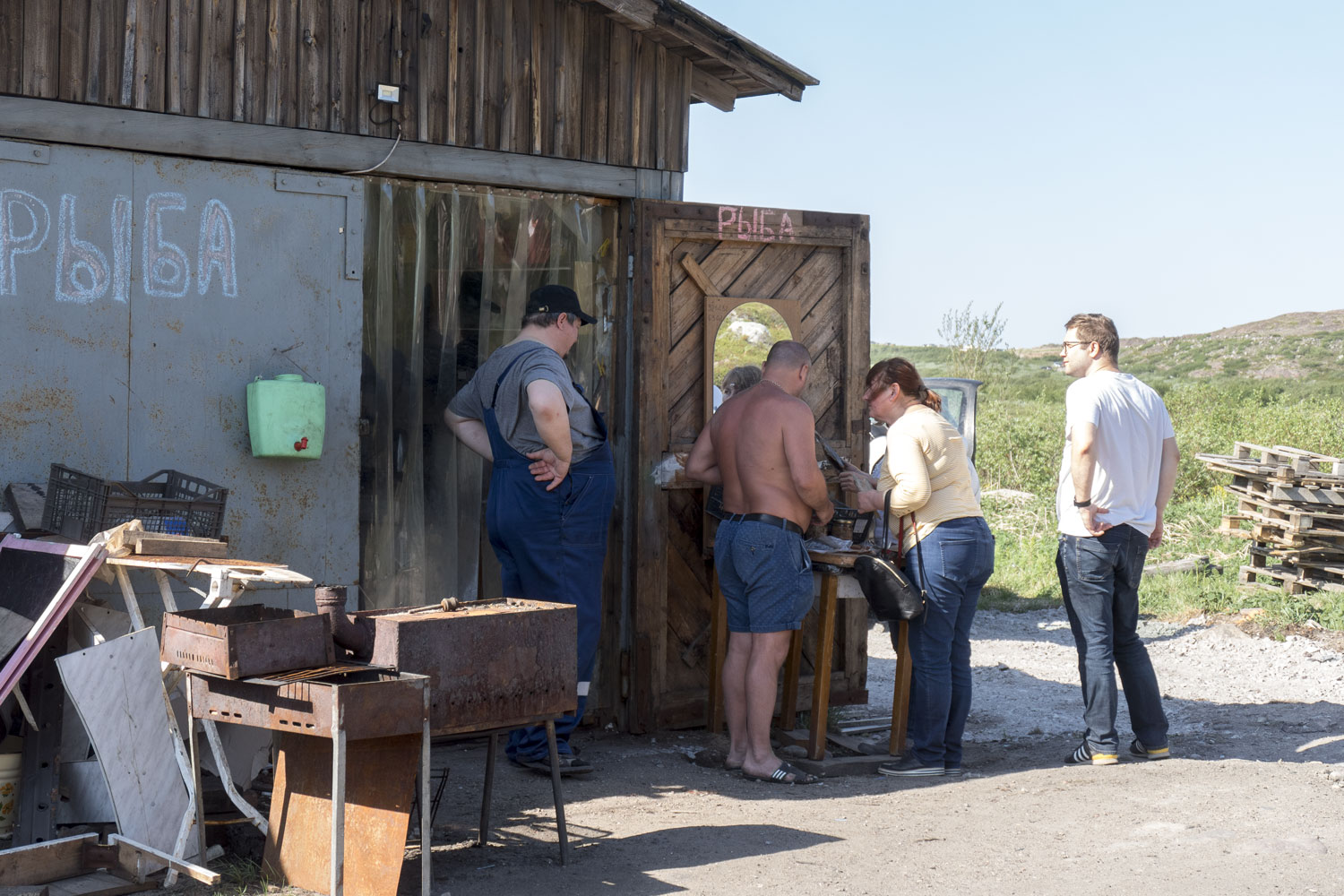
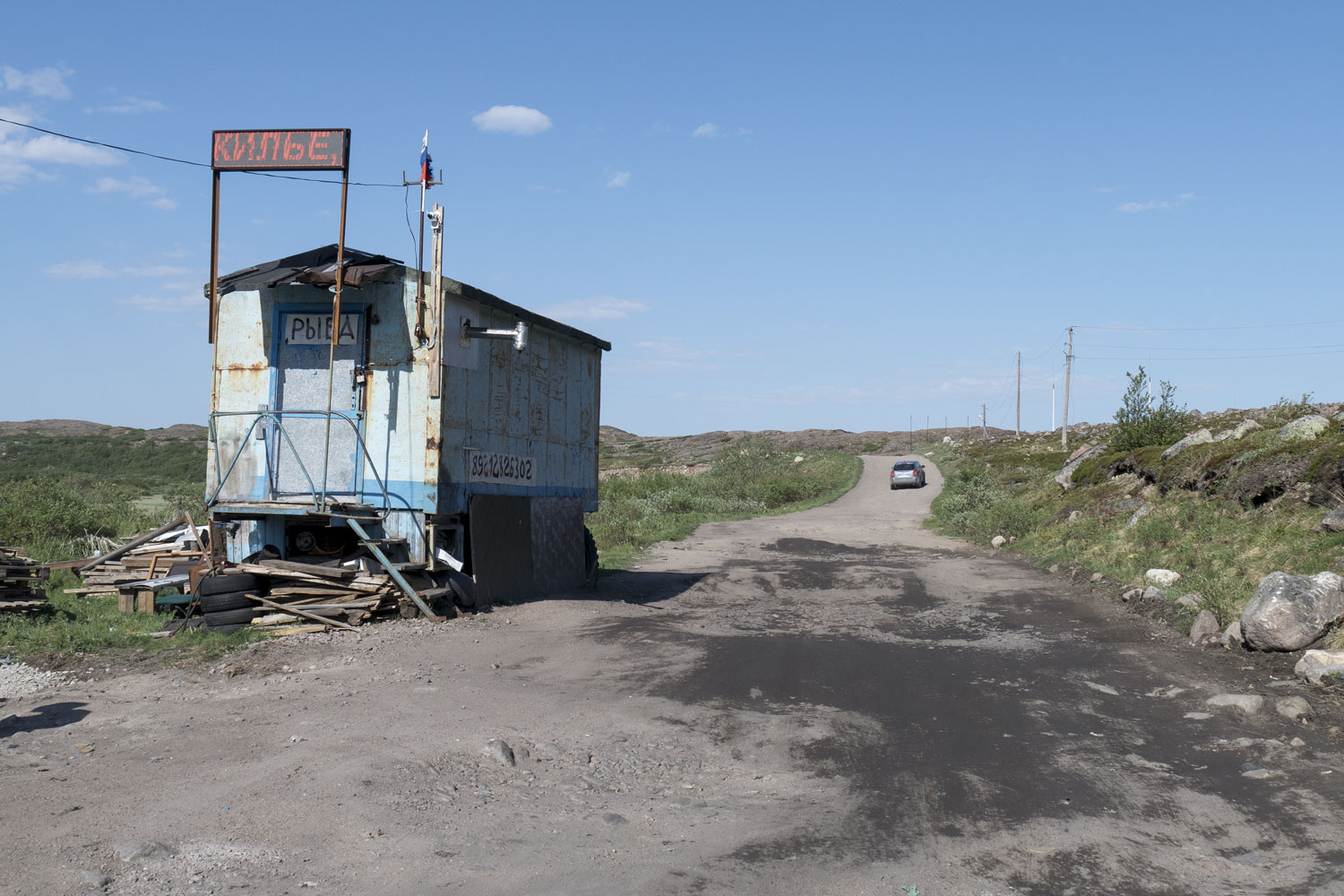
Behind it begins the extreme tundra with almost no vegetation, which suddenly ends and turns into a rocky field. This is the coast of the Barents Sea.
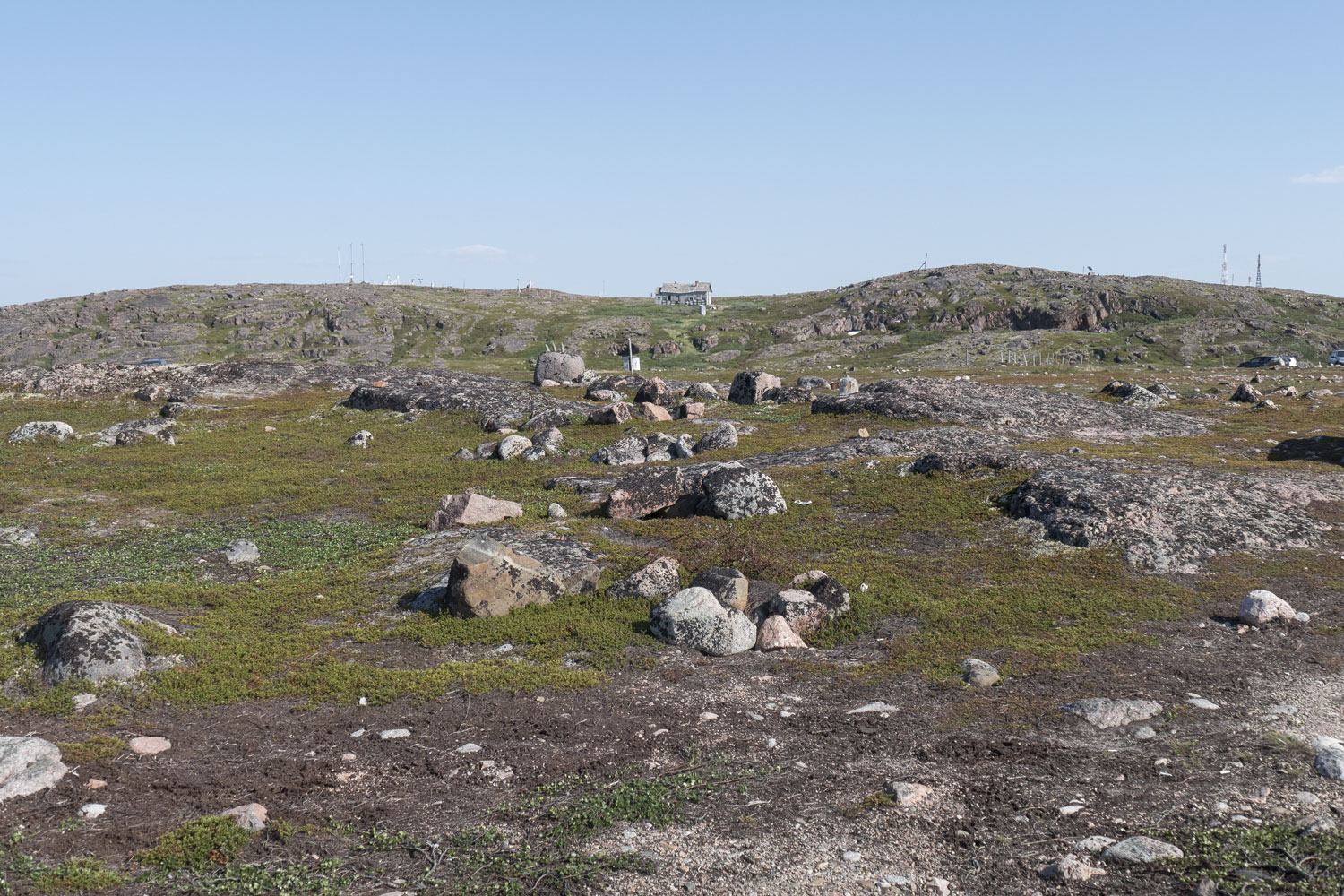
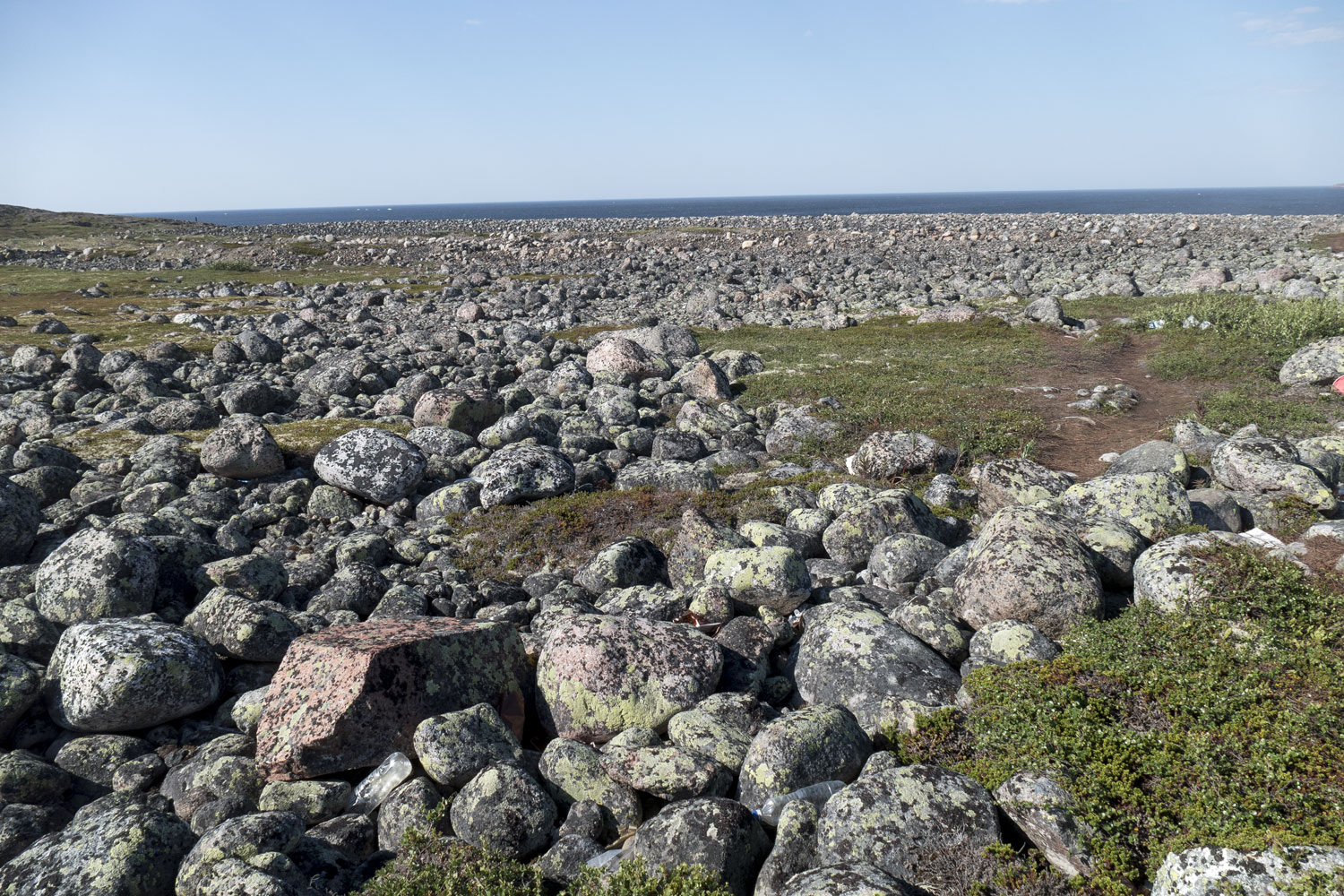
The coast of the Barents Sea is rocky. Small stones closer to the shore turn into large boulders. This is a common pebble of hypertrophied size. In the tundra, everything is distorted: vegetation is low, and the pebbles are enormous.
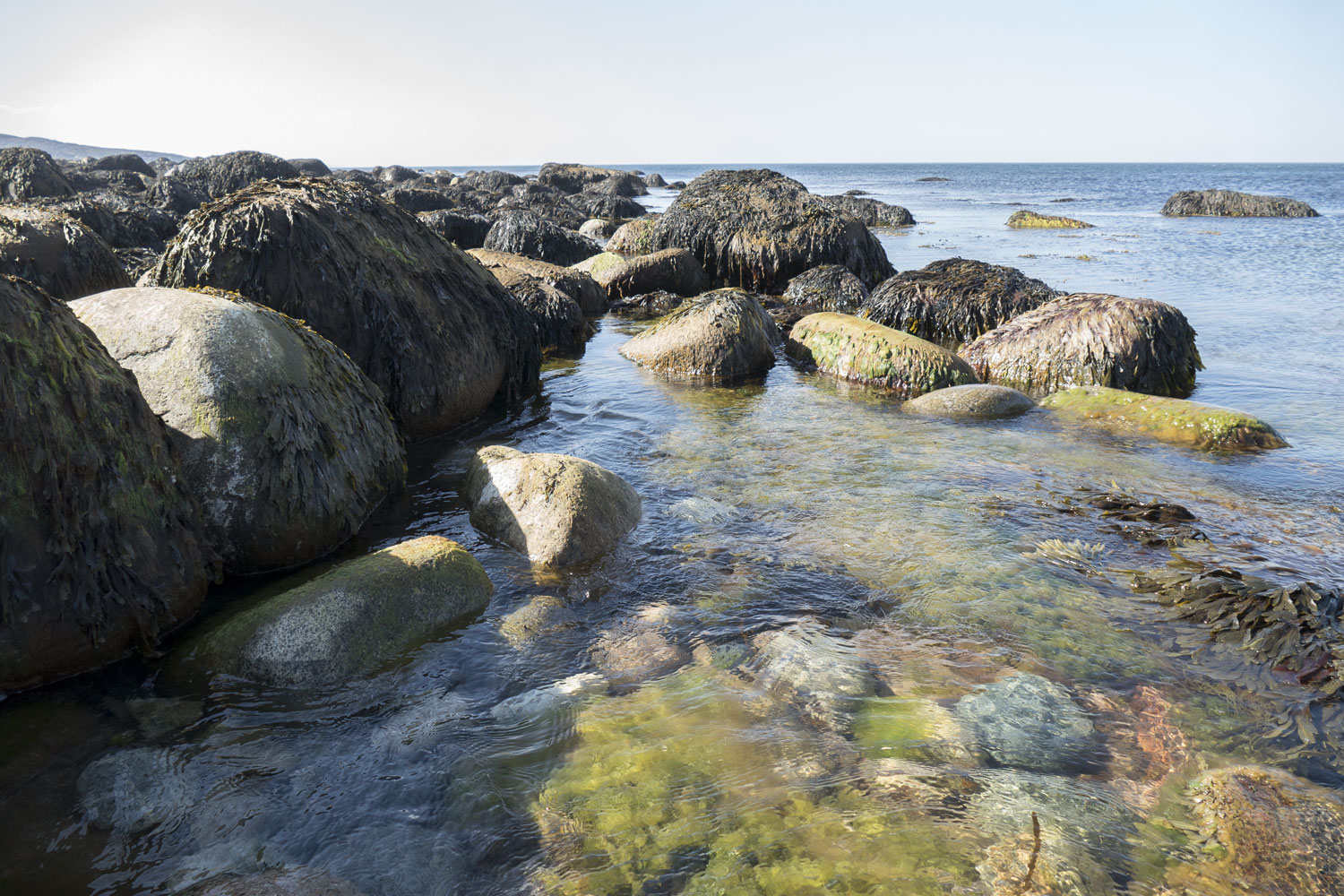
The edge of civilization.
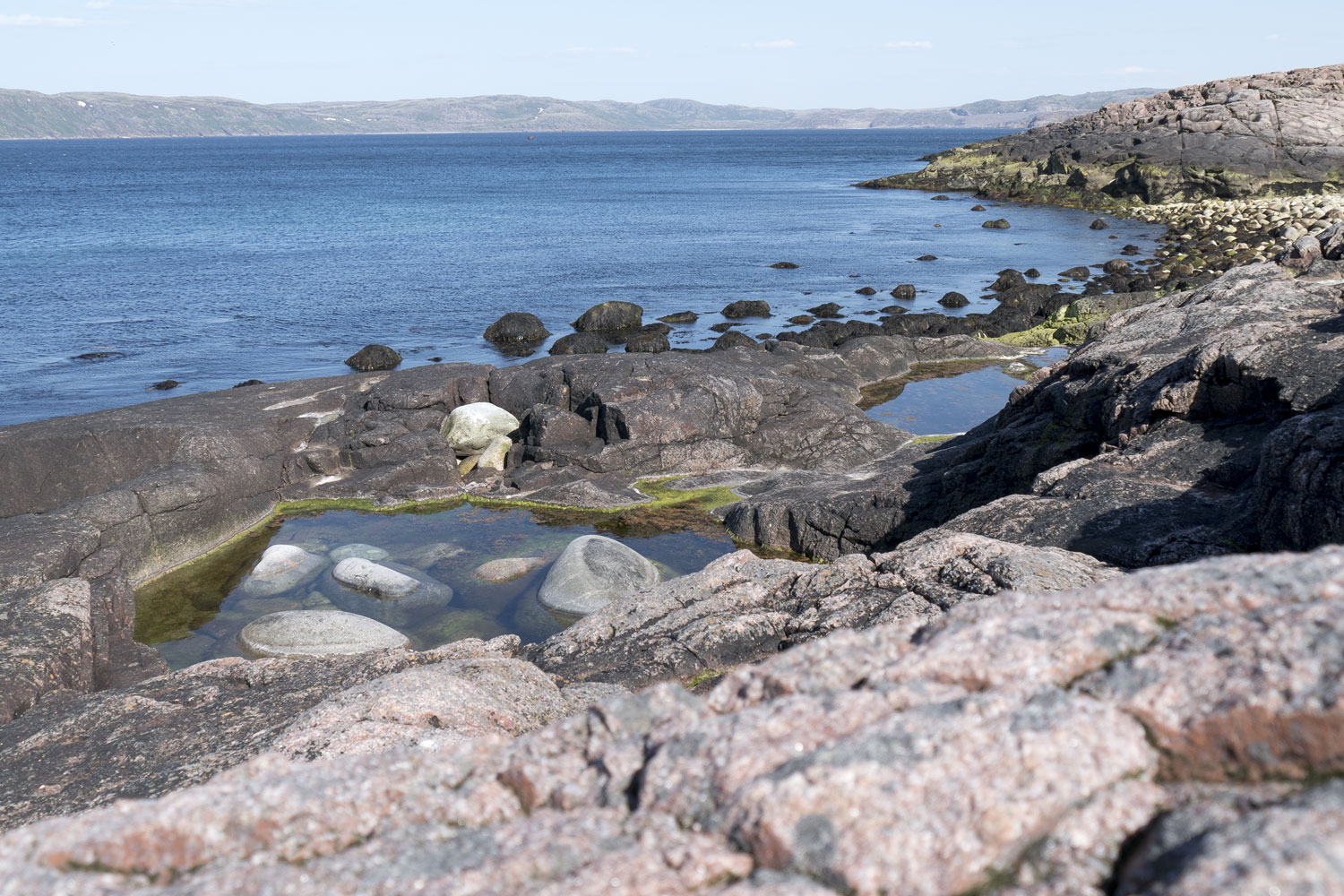
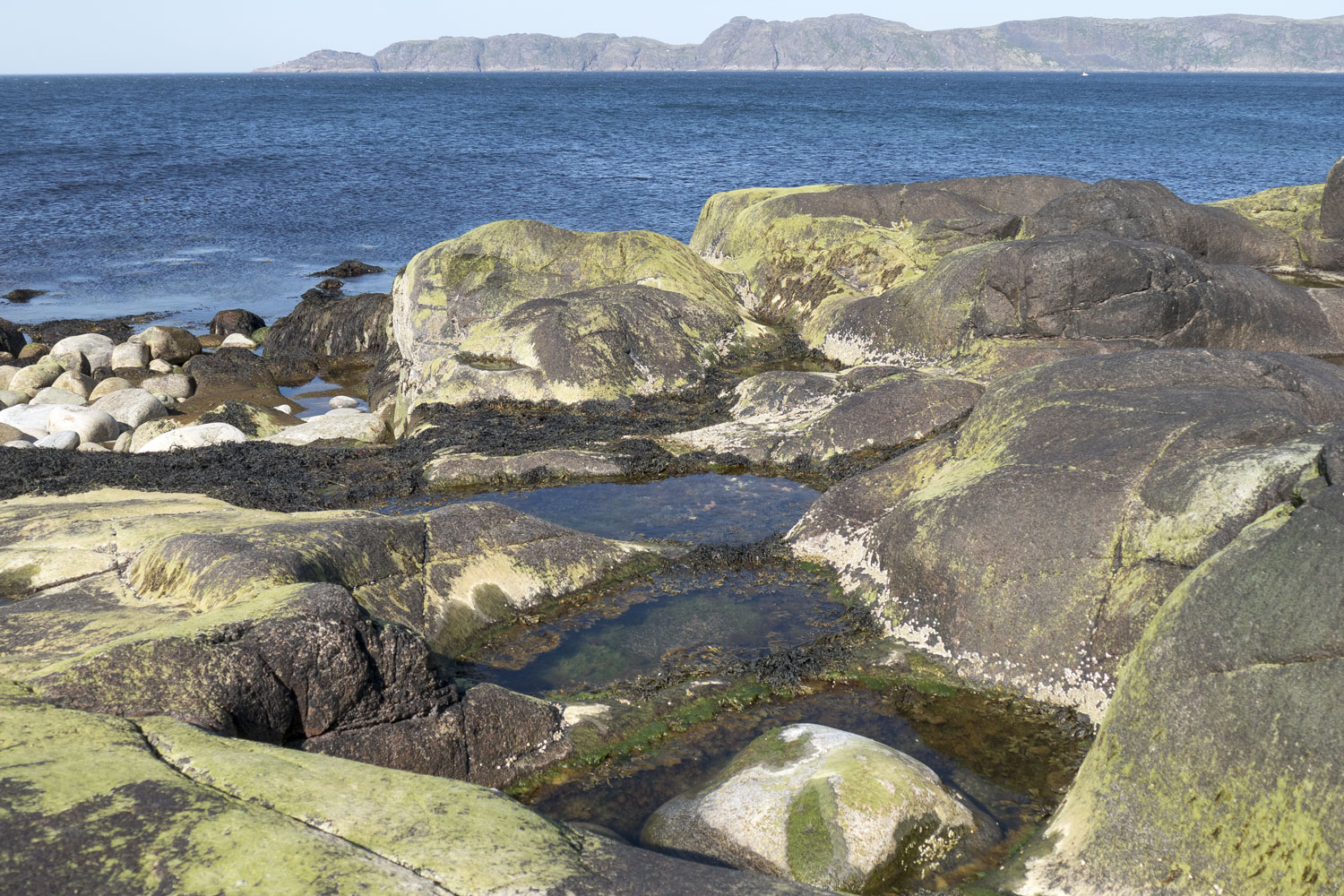
The edge, but not absence.
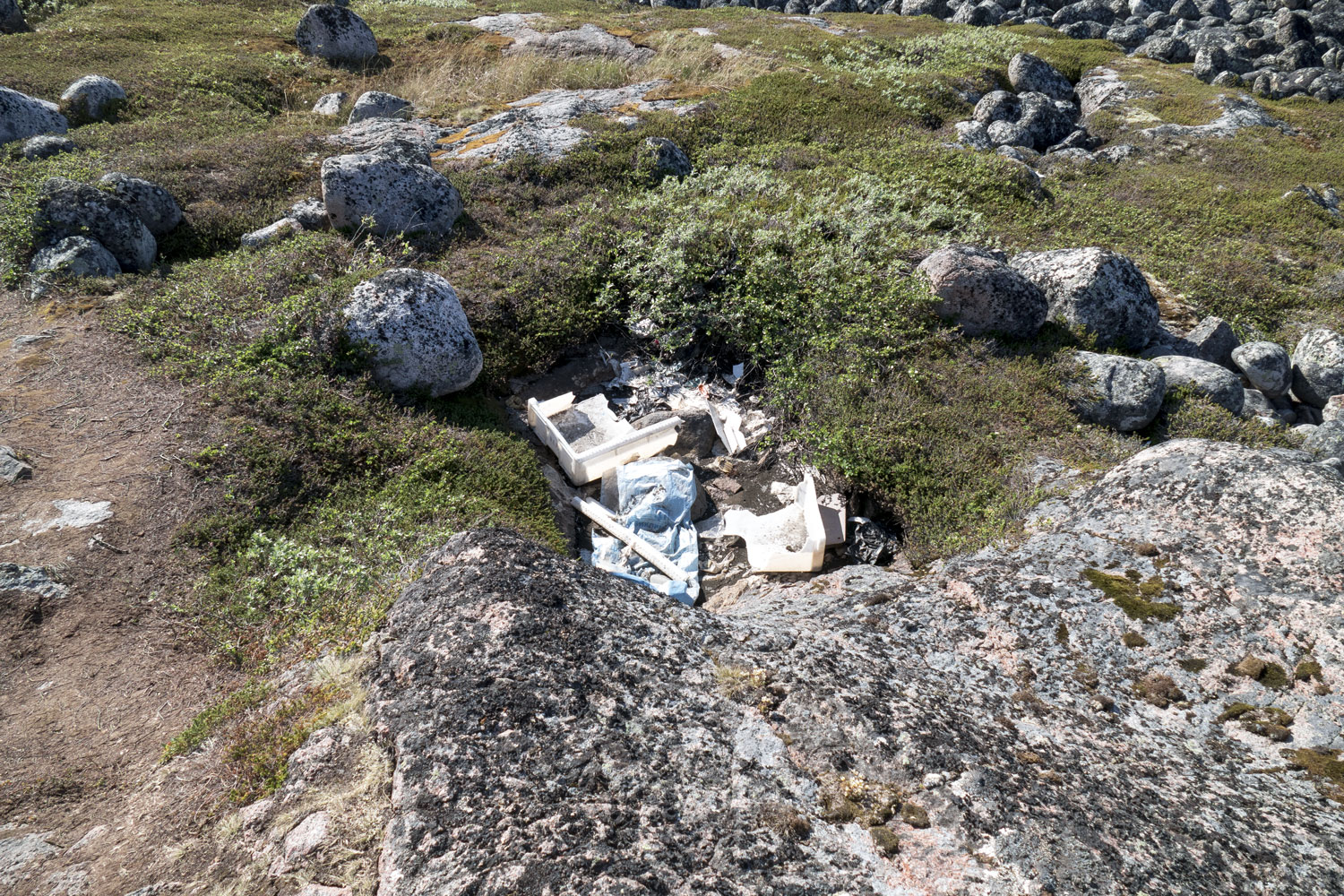
Dragon eggs
Just west of Teriberka is Lake Batareyskoye — an absolutely stunning place at the edge of the world.
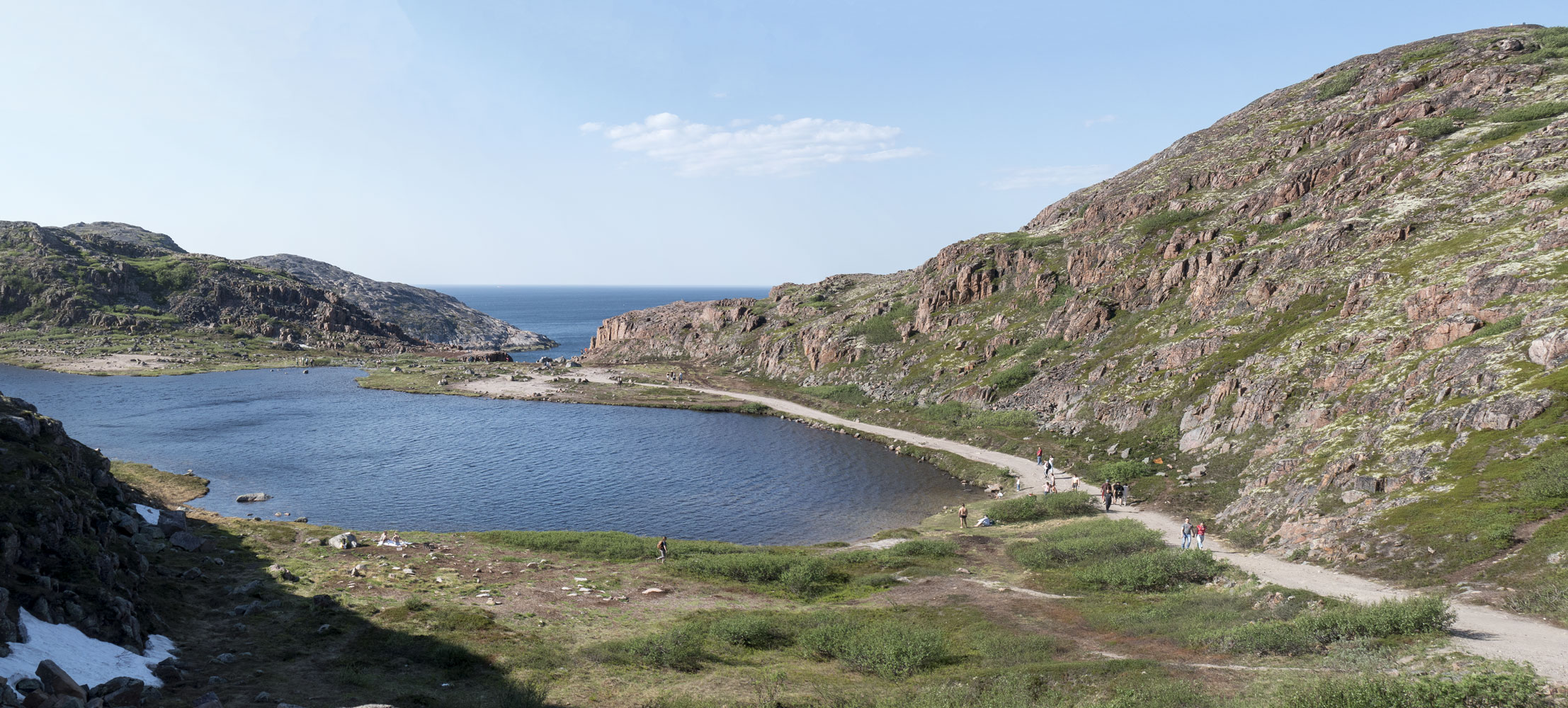
A small waterfall flows from the lake into the Barents Sea.
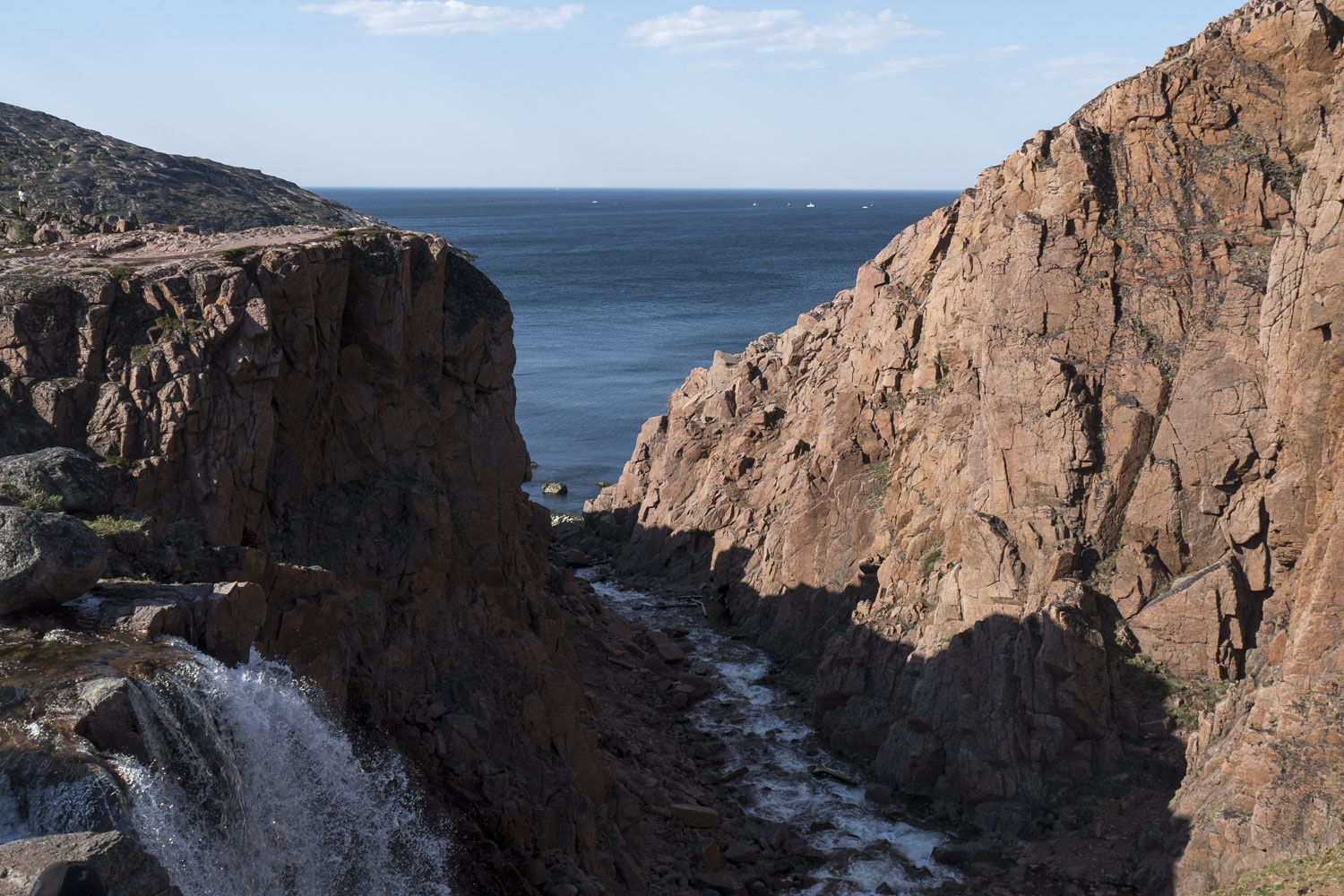
Incredible beauty. Only California used to paint such landscapes for me before.
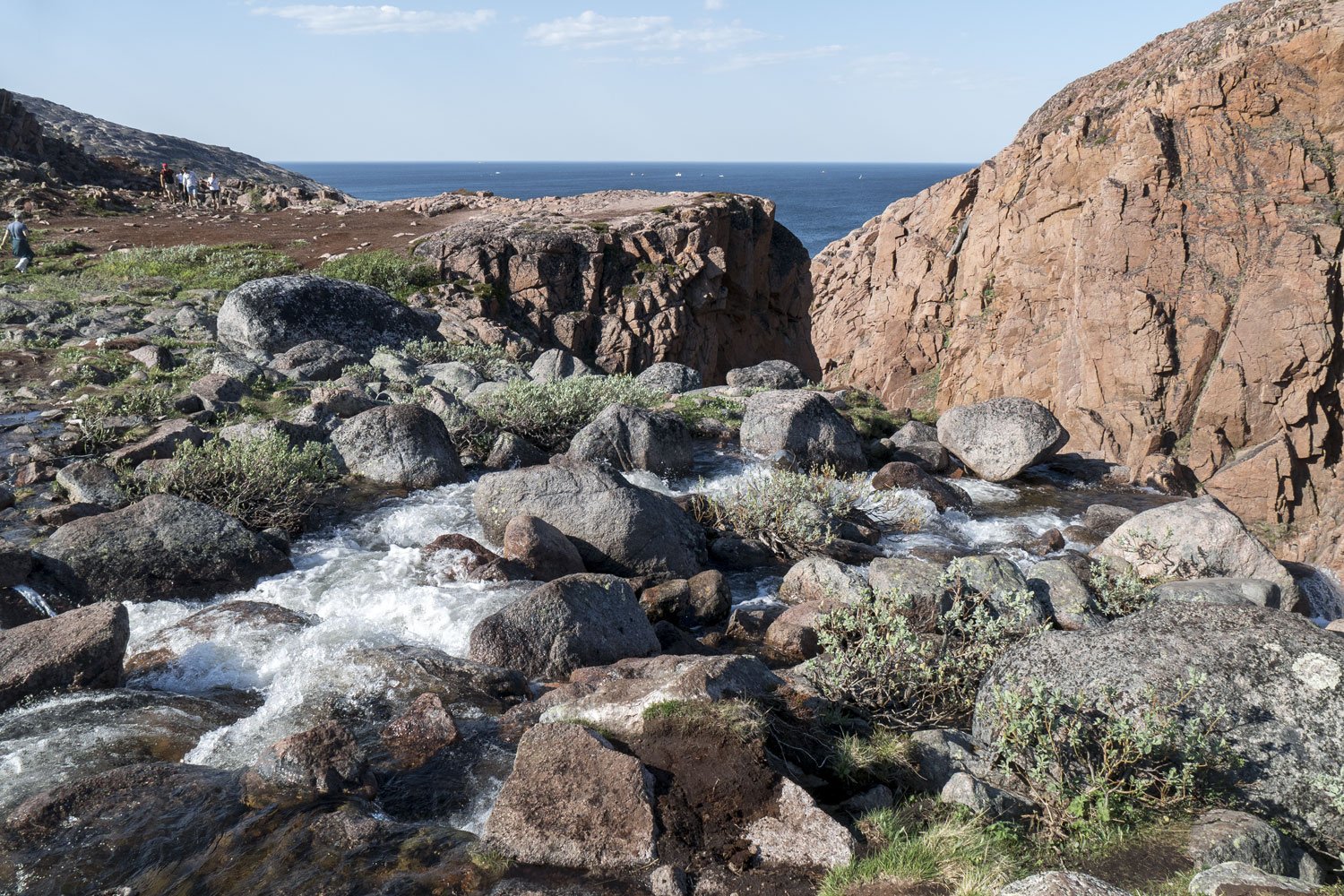
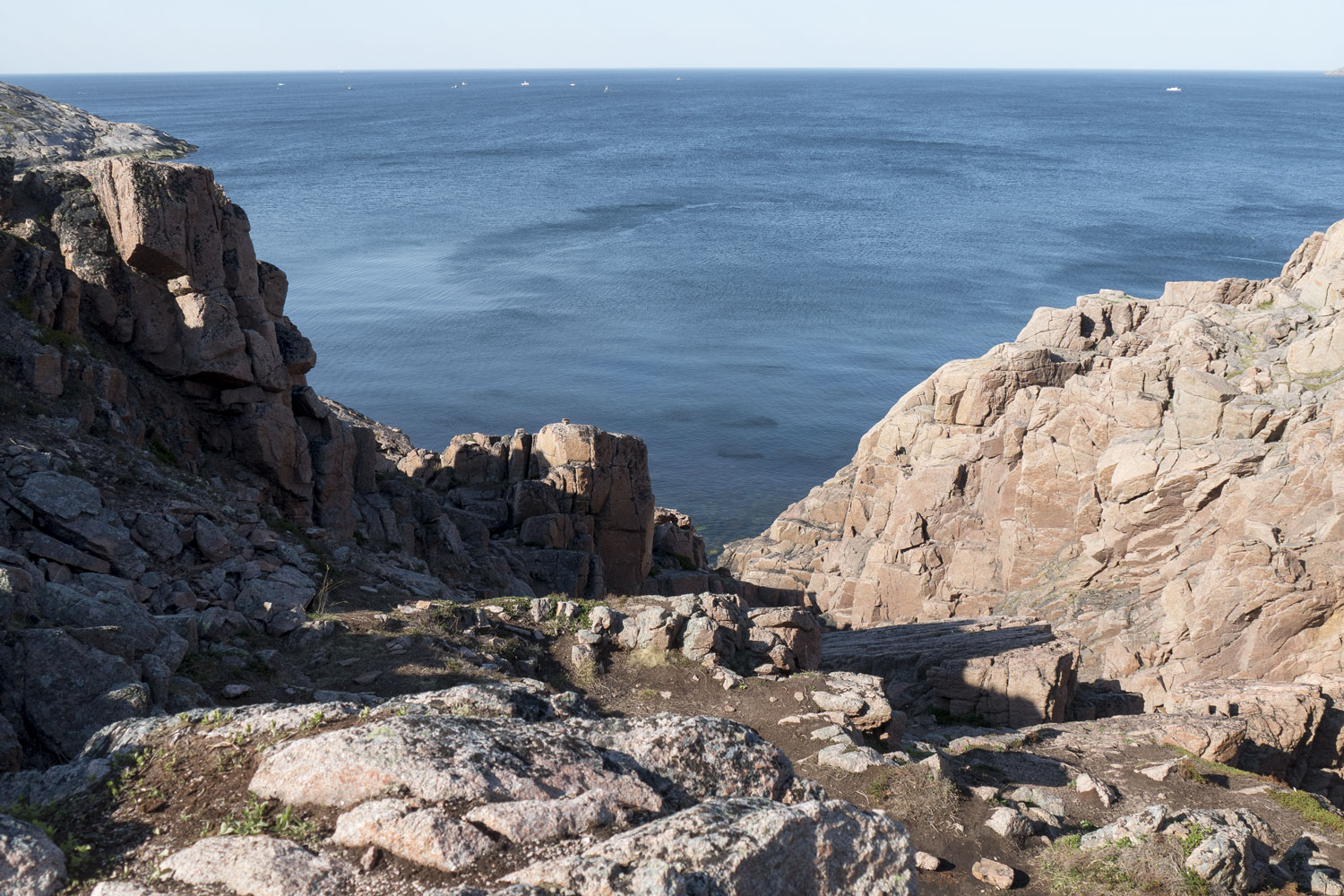
This place is famous for its beach, littered with giant pebbles of perfect shape that locals call “dragon eggs.” The view of the dragon beach opens from the very edge of the cliff — it’s all covered in eggs.
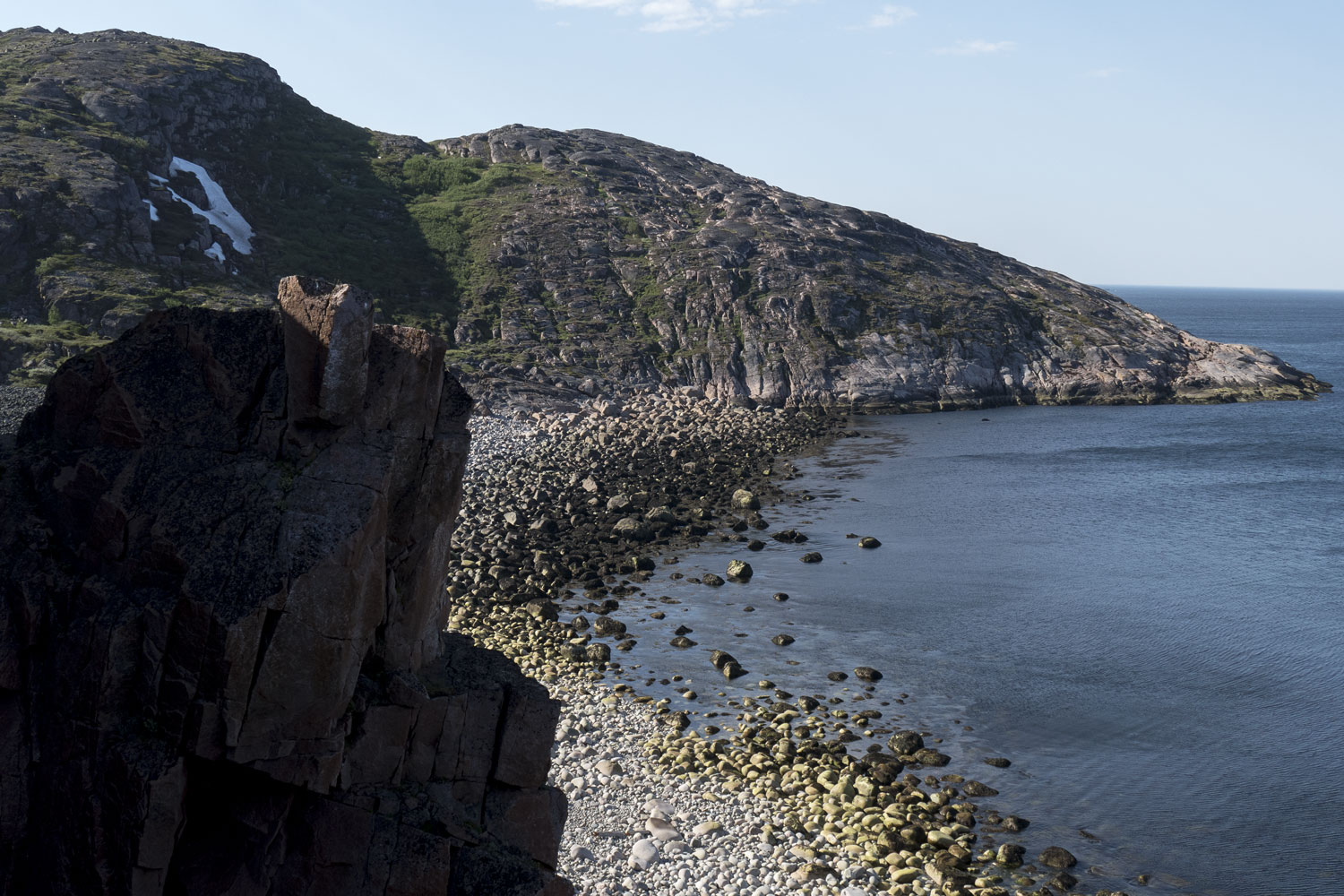
Such neat boulders.

Here ends Russia.
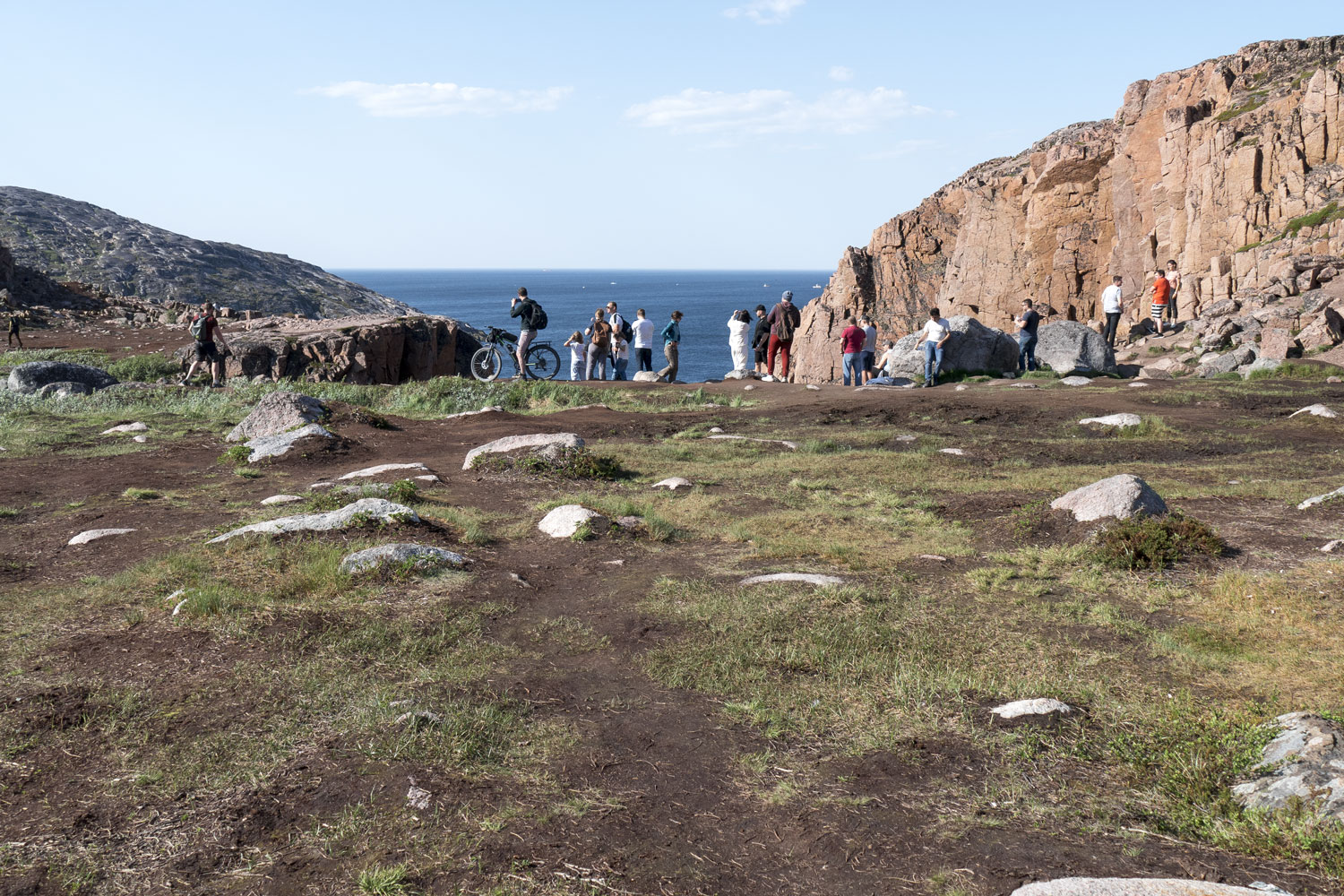
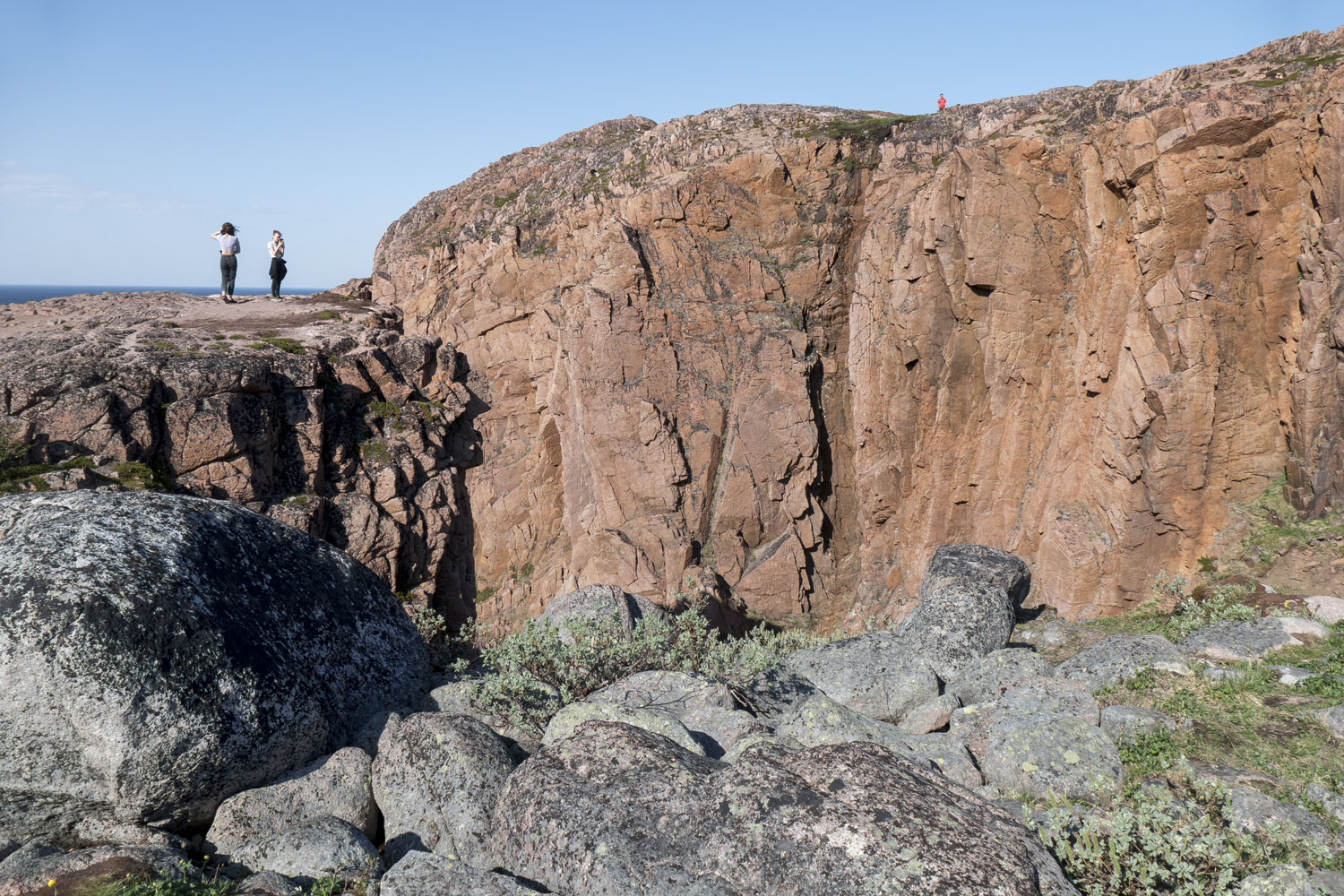
But it could have started.
